THE GREAT DANE

The functional and fashionable aspects of managing the practice’s eyewear range


The functional and fashionable aspects of managing the practice’s eyewear range
It’s official, Specsavers has been named one of the Best Workplaces in Australia for the second year in a row by Great Place to Work®, the global authority on workplace culture. What makes us the best? It’s our commitment to our peoplemaking sure we are a place where everyone feels welcomed, valued and proud to belong. Where our people can come to work and make a difference every day.
Find out more about what makes us one of the best at spectrum-anz.com/careers-at-specsavers/


Optometry Australia believes more needs to be done to maximise the potential of the profession Down Under, despite ranking well in a global survey of the industry.
Australia hit most marks in the World Council of Optometry (WCO) survey, which was conducted in 2023, released in August 2024 and involved Queensland University of Technology’s Professor Peter Hendicott – WCO’s immediate past president.
The poll of 39 nations investigated the optometric demographics within WCO member countries and information related to the scope-ofpractice and legislation.
It showed that in those countries, one optometrist serves 23,200 people on average, with just 46.2% of those polled meeting the recommended ratio of one professional to 10,000 people.
Australia was one of those nations to meet this target with 6,785 optometrists resulting in a 1:3897 ratio, according to the report.

Ms Skye Cappuccio, CEO of Optometry Australia (OA), said the survey, which Australia contributed to as a member of WCO, was a good thumbs-up for the profession in this country.
“In a general sense, Australia is performing strongly in the areas highlighted, including regulation of the profession and continuing professional education,” she said.
“Australia is also performing strongly with regard to the specific areas of clinical scope and practice highlighted in the survey.”
She said while Australia was comfortably meeting the mark on the ratio, there was a need for more data.
The situation differed across the
Australia is hitting the mark on its optometry ratio. Image: leungchopan/ adobe.stock.com.
country, she said, and “there are signs that the supply/demand balance is tipping, and supply is outstripping demand in many parts of the country”.
Since the survey was conducted, the latest Optometry Board of Australia statistics show registered optometrist numbers have now reached 7,051. OA believed this is primarily being driven by increased graduate numbers, rather than immigration. Now, a
Financial stress is rife among students with the cost of attending placements and specialised equipment a major barrier, says a leading figure in optometry education who is calling for solutions to the Australian health system’s “placement poverty” issue.
Professor Lisa Keay, head of the UNSW School of Optometry and Vision Science, is lending her voice to urgent calls on the Federal Government to extend eligibility for support for students on work placement during their studies.
In May 2024, the government announced the Commonwealth Prac Program, effective from July 2025, to provide students studying teaching, nursing, midwifery and social work funding for placement experience.
It is expected to benefit 68,000 students in these professions with a $320 weekly payment during their mandatory placements, but some allied health students, including those studying optometry, were excluded.
At the time, Allied Health Professionals Australia CEO Ms Bronwyn Morris-Donovan said it was a step in the right direction but highlighted that optometry was among jobs listed on the 2023 Skills Priority List that would not receive this funding.
“Placement poverty is real for many students of other allied health disciplines where mandatory placements are just as extensive, if not more,” she said.
The Health Services Union agrees. Its national secretary, Mr Lloyd
Williams, said some courses required up to 2,300 hours of compulsory practicum and many students were suffering hardship in undertaking that with little or no support.
Prof Keay understood that optometry could be added to the Prac Program in future, and UNSW had been urging the government to review its exclusion of other health professions.
She said other things that could be tackled include the high cost of public transport, noting Queensland had recently dramatically reduced fares.
More than half of UNSW optometry students were from greater Western Sydney, which means lengthy
continued page 8
quarter of Australian optometrists are 29 years old or under.
But there’s debate about whether Australia needs more optometrists.
In 2023 Specsavers commissioned a Deloitte Access Economics report that forecasted a shortage of 1,102 full time equivalent (FTE) optometrists in 2042, representing a 12% shortage compared to hours of eyecare required by then.
Cappuccio said the survey was a valuable “global snapshot of the practice of optometry, and insights into the diversity of optometry as a profession internationally”.
That snapshot highlighted Australia had a well-established health practitioner regulation system, clear and appropriate continuing professional education requirements,
continued page 8

Key takeaways from Dr Ebru Efem and Zeinab Fakih following a ‘Paediatric Masterclass’ recently hosted at the Australian College of Optometry – and why there's more to consider than just myopia.
page 45


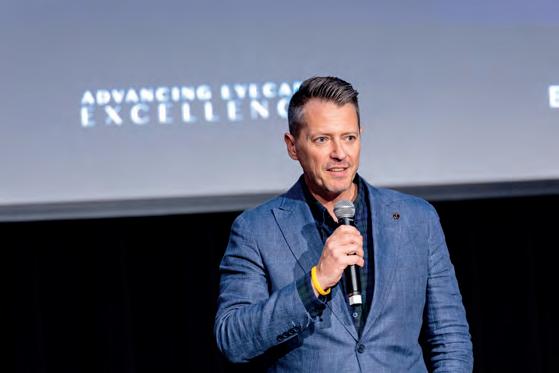
17 Bold plans
How the momentum behind EssilorLuxottica is powering new investments in OPSM and its ANZ business.

Imaging impact
Optos technology improves top-line health of patients and business bottom line for Melbourne independent.
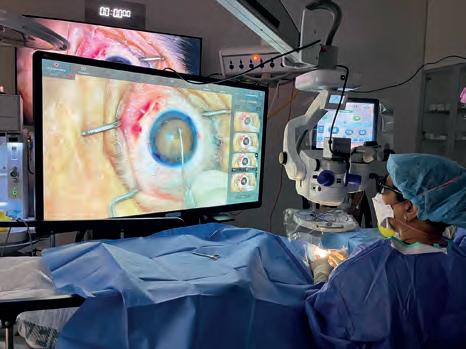

38 Smooth operation
Dr Smita Agarwal’s initial impressions on the latest upgrades to Alcon’s digital surgical microscope.

48 Mission possible Inside Optical Dispensers
Australia's recent outreach trip where 407 glasses were provided to Fijian communities.

When I told my wife an upcoming edition of would have an article featuring couples operating their own optometry practices, we laughed at the thought of us running our own business together.
My tendency to ruminate on a problem until it’s solved would be incompatible with her ability to leave any issue at the door. It would be shaky from the get-go and I could picture myself sabotaging many dinners with staffing or financial concerns.
But there are many couples that make it work. In fact, couple-run practices are a feature of the independent optometry landscape in Australia. And while things become strained from time-to-time, many are running successful enterprises alongside a rich family life.
But having it all isn’t easy. The fact they are always working on the business is a blessing and a curse. On one hand, the established trust means decisions are made quickly and often their complementary skillsets allow them to straddle back and front of house.
But who runs the practice while trying to take a holiday together? And if you’re lucky enough to get away, how do you avoid poolside debates about staff salaries and supplier relationships?
While not explicitly stated, doing away with the ‘work/life balance’ concept seems to be a secret to their success. Instead of a clean separation between the two, they view it more as an integration recognising work is a necessary component that fits into their lifestyle.
An Australian study, albeit it from 2000, shows why it might be beneficial to take the plunge with your spouse. After studying 20 “copreneurial” marital partners, they found the disadvantages of living and working together are outweighed by the autonomy in their lives. It also promotes a desirable, family-friendly workplace and an entrepreneurial spirit in their children.
We would like to thank Ms Carolyn and Mr Peter Hewett, Mr Daniel and Ms Michelle Tracton, and Mr Robert Nawrocki and Ms Simone Hibbert for pulling the curtain back on their personal and professional lives (page 13), showing us how practices run by couples with tried and true small business values can thrive in 2024.
MYLES HUME Editor




Just as Insight went to print, the BAYER'S Eylea 8mg, a higher dose of aflibercept, was added to the Pharmaceutical Benefits Scheme (PBS) on 1 October 2024. The anti-VEGF treatment is designed so patients with neovascular age-related macular degeneration (nAMD) and diabetic macular oedema (DMO) can receive fewer injections. The recommended dosing schedule involves three initial monthly injections in these patients, followed by extended dosing intervals of eight to 16 weeks based on visual
US doctors are concerned about cases of ocular syphilis without signs of the disease anywhere else on the body. Syphilis infections usually show up first on the genitals, inside the mouth or anus, then as a rash elsewhere. Only 1-5% of cases are thought to involve the eyes, but experts are on high alert, saying the infection may have been allowed to spread so widely, and for so long, that what used to be considered “a fringe event might not be so rare anymore”, reported The Atlantic WONDERFUL
Almost 18 months after a world-first whole eye and facial transplant, there is no sign of rejection and some indication of retinal response to light stimuli, says a new report. The landmark surgery, performed on a 46-year-old military veteran who survived a work-related high-voltage electrical accident, involved transplantation of the left eye and a portion of the face from a single donor. The operation was performed in May 2023 at NYU Langone Health in the US, by a team of more than 140 surgeons led by Dr Eduardo Rodriguez.
Elton John has reported he’s “still standing” despite battling a serious eye infection that has left him with “limited vision”. “Over the summer, I’ve been dealing with a severe eye infection that has unfortunately left me with only limited vision in one eye,” the singer, 77, shared on Instagram. “I am healing, but it’s an extremely slow process and it will take some time before sight returns to the impacted eye.”
and or anatomic outcomes. IN OTHER NEWS, Rayner unveiled the world’s first spiral IOL, which the company said delivers a continuous full range of vision with minimised dysphotopsia, achieved through a non-diffractive optic with 0% light loss. RayOne Galaxy and Galaxy Toric was a major talking point at ESCRS 2024 in Barcelona after the manufacturer designed the lens using AI and in partnership with Dr João Lyra from Brazil. Rayner hosted a lunchtime symposium that attracted more than 600 surgeons, with a star panel of early implanters discussing their early impressions. The lens will soon be
available in Australia, but without a healthcare reimbursement listing to begin with. FINALLY, ODMAFair25 and Optometry NSW/ACT’s Super Sunday clinical conference will be held at the same venue and during the same dates. ODMA CEO Ms Amanda Trotman said she was focused on collaboration “that assists like-minded optical organisations to work together to stage these valuable live events whilst at the same time reducing overall overheads given the economies of scale and the high cost of staging live events”. ODMAFair25 is running 27-29 June, and Super Sunday 29 June.

It is estimated upwards of 90% of drugs on the market lack the appropriate information for their use while pregnant or lactating. How can optometrists navigate this? Page 41
THIS MONTH
22 – 24 November
The 17th Asia Pacific Vitreo-Retina Society Congress is taking place in Singapore, under the theme: “Transforming retinal disease management with technology”. 2024.apvrs.org
Complete calendar page 56
3 – 7 December
The International Society of Ocular Oncology is heading to Goa, India, focusing on tumours of the eyelid, adnexa, uvea, retina and orbital issues, plus more. iapb.org
Published by:
379 Docklands Drive, Docklands VIC 3008
T: 03 9690 8766
www.primecreative.com.au
Chief Operating Officer
Christine Clancy christine.clancy@primecreative.com.au
Publisher
Sarah Baker sarah.baker@primecreative.com.au
Editor
Myles Hume myles.hume@primecreative.com.au
Assitant Editor
Rob Mitchell
rob.mitchell@primecreative.com.au
Commissioning Editor, Healthcare Education
Jeff Megahan
Business Development Manager
Luke Ronca
luke.ronca@primecreative.com.au
Client Success Manager
Salma Kennedy salma.kennedy@primecreative.com.au
Head of Design
Blake Storey
Art Director
Bea Barthelson
Subscriptions T: 03 9690 8766
subscriptions@primecreative.com.au
continued from page 3
and a scope-of-practice more advanced than many countries internationally.
But the picture wasn’t as healthy when compared with those nations against which Australia tended to judge itself.
Those countries included Canada, New Zealand, the US, and the UK, “where there are relevant similarities between the health system and the entry-level requirements of optometrists”.
Cappuccio said that comparison revealed Australia was not maximising the potential of its national optometry profession.
She said while Australia was performing strongly in specific areas of clinical scope and practice highlighted in the survey, there were some opportunities not highlighted for the scope of Australian optometrists to “evolve in ways that would benefit the communities they serve”.
“Our optometry workforce needs to be responsive to the specific Australian context,” she said.
Australia had a highly-educated and highly-skilled optometric workforce, but “in a number of ways, the scope-of-practice for optometrists in Australia lags behind these international counterparts”.
OA has made similar calls in the past.
In its recent response to the Federal Government’s Scope of Practice Review, it said the profession faced “various funding, regulatory, technological, cultural, and inter-professional barriers” preventing it from practising to its fullest scope.
It also called for a detailed comparison of health professionals in other countries
to identify opportunities for further scope enhancements and highlighted examples of health systems where prescribing of oral medications and intravitreal injections –which Australian optometrists are prohibited from performing – are administered by non-ophthalmologists.
Currently, Australian optometrists with an endorsement for scheduled medicines can prescribe a specified list of topical medications and all optometrists registered to practise can use diagnostic drugs as part of their practice.
OA supported the review’s proposal for a national skills and capability matrix that would set out the skills and capabilities of health professionals, including members of regulated, self-regulated and unregulated professions.
And it backed moves to establish an independent body tasked with identifying and implementing emerging best practice evidence into primary health workforce models.
Cappuccio said the WCO survey had highlighted once more that there were “clear opportunities for the scope of
Other key findings

“OUR OPTOMETRY WORKFORCE NEEDS TO BE RESPONSIVE TO THE SPECIFIC AUSTRALIAN CONTEXT.”
SKYE CAPPUCCIO, OPTOMETRY AUSTRALIA
Australian optometrists to evolve in ways beneficial to the community”.
The global poll also revealed that 33% of the 39 countries do not regulate minimum levels of education for entry-level optometric practitioners, 20% limit the use of diagnostic drugs, and 25% limit the use of therapeutic pharmaceutical agents.
Dr Yazan Gammoh, chair of the WCO Education Committee and lead author of the study, said the survey was “unique in highlighting the global variations in the scope of optometry practice from the perspective of the WCO Competency Framework for Optometry”.
The results obtained from this study are expected to assist policymakers and stakeholders in fulfilling the World Health Organisation’s call for optometry services to provide people-centred eyecare through evidence-based information.
They may also inform the recently launched WHO SPECS 2030 initiative, which envisions a world in which everyone needing a refractive error intervention has access to quality, affordable, and people-centred refractive error services.
• The average male-to-female ratio was 45% males vs. 55% females globally. It was 40% vs. 60% in Australia.
• Optometry is not regulated in France, Portugal, India, Kenya and Cameroon.
• Thirteen countries (33%) do not require a Bachelor’s degree as a minimum to practice optometry.
Conclusion: Many countries where optometry is recognised struggle to have an adequate number of optometrists, which hinders access to eyecare. This is compounded by unregulated minimum levels of education for entry-level optometric practitioners. In addition, several countries limit or prohibit many optometric procedures that restrict the ability of optometrists to provide eyecare and vision health services at the primary care level.
Source: 2023 Global Survey of Optometry: Defining Variations of Practice, Regulation and Human Resources Between Countries
continued from page 3
commutes to the main campus, which is a high cost even with student concession travel on public transport.
“Work integrated learning is a key component of our training program, however we recognise that there are financial hurdles due to these requirements,” Prof Keay said.
The university had conducted a comprehensive financial hardship survey of optometry students in 2023. That poll found “financial stress was prevalent, affecting more than half of the respondents”, she said.
“This stress was even more pronounced among students from low socio-economic
backgrounds (SES ) and those in their final years of study, where clinical placements play a pivotal role.
“These challenges encompass not only the loss of income through attendance requirements and additional expenses such as travel, meals and accommodation,” she said.
Prof Keay said students often relied on part-time work to sustain themselves during their university studies and that was difficult to maintain during the rural and interstate placements required, sometimes lasting up to four weeks.
“UNSW remains committed to increasing access to our programs through the UNSW Gateway admissions pathway, specifically

designed for students from low SES backgrounds and approximately 20% of our enrolments enter via this pathway,” she said.
“Given the context of placement poverty, adequate support for these students becomes imperative. Our industry is supportive, for example providing a student discount for equipment purchases and the hospitality of our clinical placement hosts, particularly in rural areas.
“In the past three years we have been able to provide a limited number of bursaries to support equipment purchases and interstate or rural placements. This has been made possible through generous support of partners like Young Optometrists and Alcon.”
Japanese optical retailer OWNDAYS, with more than 550 stores internationally, has expanded its footprint in the Australian market with two new locations opening in Sydney.
The stores are located in Westfield Hurstville and Westfield Burwood.
OWNDAYS’ first entered the Australian market with a shop in Westfield Chatswood in 2015. That was followed by a Sydney City store in May 2016.
“Further plans to expand the brand’s network Australia wide are in the works,” a statement said.
These new investments suggest Australia is a target market for OWNDAYS. Founded in Tokyo in 1989, the company has evolved into a retail chain operation selling more than 2.5 million pairs of glasses annually across over 550 stores in 13 international locations.
The company also made headlines in June 2022 following a strategic merger with India’s prescription eyewear company, LENSKART, in a move that “further solidified its position as a global eyewear industry leader”.
The frames OWNDAYS stocks are designed in-house, with each pair of
spectacles “carefully assembled by hand”, the company said.
Bluebell Group, an omnichannel brand partner and operator in Asia, has supported OWNDAYS with its Australian expansion.
“This collaboration marks a continuum of the existing successful joint-venture for the Bluebell Group and the eyewear leader in the Hong Kong market since 2016, where the group operates the brand’s presence in 18 stores across the city today,” Bluebell said in a statement.
Ms Nelly Ngadiman, managing director of Southeast Asia and Australia for Bluebell, said due to how the joint venture had progressed in Hong Kong, the company was pleased to extend the partnership to the Australian market with two new stores in 2024.
“We look forward to reshaping the landscape of eyewear retail in Australia, through the brand’s unique eyewear offer and service, which we are both committed to delivering,” she said.
The Bluebell Group said it would use its knowledge of the OWNDAYS brand and eyewear sector, while leveraging its local landlord relationships and market expertise

network into the Australian territory” for the brand.
Under the leadership of Shuji Tanaka, OWNDAYS has transformed into a retail chain operation that sells over 2.5 million pairs of glasses annually across over 120 points of sales in over 12 markets in Asia-Pacific, including Japan, Singapore, Taiwan, Hong Kong, Australia, Thailand, Philippines, Malaysia, Vietnam, Indonesia, and Cambodia.

Earlier this year it further expanded its India footprint, with the launch of a new store in Mumbai, its seventh in the country.
An international business research company is predicting rapid growth for the eyewear industry in the next few years and market revenue to pass AU$350 billion. And it is tipping the Asia-Pacific region to drive much of that growth as the “fastest-growing region in the eyewear market”. India-based The Business Research Company studied historical data and current and future trends. It predicted the size of the eyewear market to hit AU$357b in 2028, up from AU$236b in 2024. The company predicted that growth to continue because of fashion and style trends, increasing vision problems, an ageing population, rising awareness of the need for UV protection, and the growing endorsements of celebrities and influencers.
Cylite, the Melbourne manufacturer of the Hyperparallel OCT (HP-OCT), has teamed up with EyeSpace on the integration of software that allows the design of contact lenses from scans taken by the equipment. The company says the EyeSpace software represents the first such link to a contact lens manufacturer and allows users to directly launch it from a chosen anterior OCT scan and generate corneal lens designs from its precise height maps. The HP-OCT captures 3D true-volume images to generate a full suite of anterior and posterior corneal topography maps, from which the EyeSpace software link draws its data. The company pointed out that clinicians could use the same scan to not only send precise height information to the EyeSpace software, but also to separately track myopia progression via its state-of-the-art axial length measurement, making the HP-OCT an “excellent and rounded tool for myopia management”.
Australian cricket captain Mr Pat Cummins has deepened his ties with the Carrera Eyewear brand to release his own optical and sunglass range. Cummins became an ambassador of the Safilo-owned brand in 2023 and has now released ‘The Pat Cummins Selection’. Launched in October 2024, it features a limited edition range of six best-selling Carrera optical frames and sunglasses redesigned and customised with an exclusive new green colour and gold signature. “The Pat Cummins Selection provides our customers with an exclusive world-first product offering,” said Mr David Pearson, senior director APAC at Safilo. “Pat collaborated with our Carrera designers in Italy to select the popular eyewear models and bring them to life with unique colours and inscriptions.” The range has Cummins’ signature in gold on the lenses and frames.

Optometrists face a $14 increase while ophthalmologists will pay $32 more. Image: Khaohom Mali/stock. adobe.com.
Australian optometrists and ophthalmologists have been unable to escape a registration fee hike for 2024/25, but the regulator says it has factored in cost of living pressures to keep costs down.
Optometrists face a $14 fee increase, while ophthalmologists and other medical professionals will pay $32 more, which is considerable when added to a significant $135 fee rise imposed last year.
It means the registration fee for optometrists will increase in line with indexation by 4.1% to $361 from 18 September 2024, while for medical practitioners the $1,027 fee is a 3.2% increase, below indexation, effective from 24 July 2024.
These fees, which are different in NSW where a separate body handles complaints, will cover the registration period from 1 December 2024 to 30 November 2025.
In 2024/25, all National Boards have limited fee increases to below or in line with indexation. Four Boards have frozen their fees and another two have kept their fee increases to under $10.
This wasn’t the case for optometry, but Optometry Board of Australia chair Mr Stuart Aamodt acknowledged practitioners were not immune to economic challenges.

“The board recognise this and have worked to keep fees as low as possible while ensuring we can perform our vital role to keep the public safe,” he said.
The $361 isn’t the highest fee optometrists have had to pay. Up until 2019, Australian optometrists enjoyed a consistent fee of $300, which was first imposed in 2016-17 and frozen for two years. Before that, the sector saw fees drop from a high of $415 in 2012-13.
Ophthalmologists have faced a significant rise in fees in recent years. The new fee of $1,027 is $167 more than two years ago.
Echoing Aamodt, Australian Health Practitioner Regulation Agency (Ahpra) CEO Mr Martin Fletcher said Ahpra and the National Boards were “acutely aware that registered health practitioners, like many Australians, face cost-of-living pressures”.
“We have worked hard to find a balance between keeping fees as low as possible and managing increasing regulatory costs, to continue our vital work to keep the public safe,” he said.
Registration fees fund the work of the National Boards and Ahpra to keep the public safe by managing registrations. Fees also cover developing professional standards, and investigating and managing concerns about registered health practitioners.
Ophthalmologist Dr James Muecke and South Australian colleagues have reported 15 cases of people reversing their type 2 diabetic macular oedema (DMO) using only their diet.
The work – involving the University of Adelaide, Royal Adelaide Hospital, Adelaide Eye and Retina Centre and Sight For All –featured on an academic poster at the World Ophthalmology Congress in Vancouver, Canada, in August 2024.
Dr Muecke, the 2020 Australian of the Year, said while 15 patients had reversed their sight-threatening eye condition, they had also reversed their underlying metabolic dysfunction.
"Loss of sight is the most feared complication of diabetes, but there are many other life-changing and life-threatening consequences," he said. "Most of these can be prevented and some can even be reversed with lifestyle management, primarily a change in diet.”
In the study, Dr Muecke et al wanted to explore the impact of low carbohydrate, healthy fat (LCHF) diets, on type 2 diabetes and DMO.
They retrospectively analysed OCT scans of 15 DMO patients, none of whom were undergoing anti-VEGF intravitreal injections. After being prescribed various LCHF diets to manage their disease, all patients had decreased intraretinal fluid (IRF) levels. Two eyes had stable disease with no improvement/worsening of IRL levels. Also, two patients had evidence of complete drying of the macula in at least one eye. Interestingly, there was evidence of IRF levels rebounding over periods of poor patient dietary compliance. The researchers concluded that more research was required and that quantitative analysis of retina biomarkers and novel IRF volumetric studies would help to understand the role of LCHF diets on the retinal microenvironment.
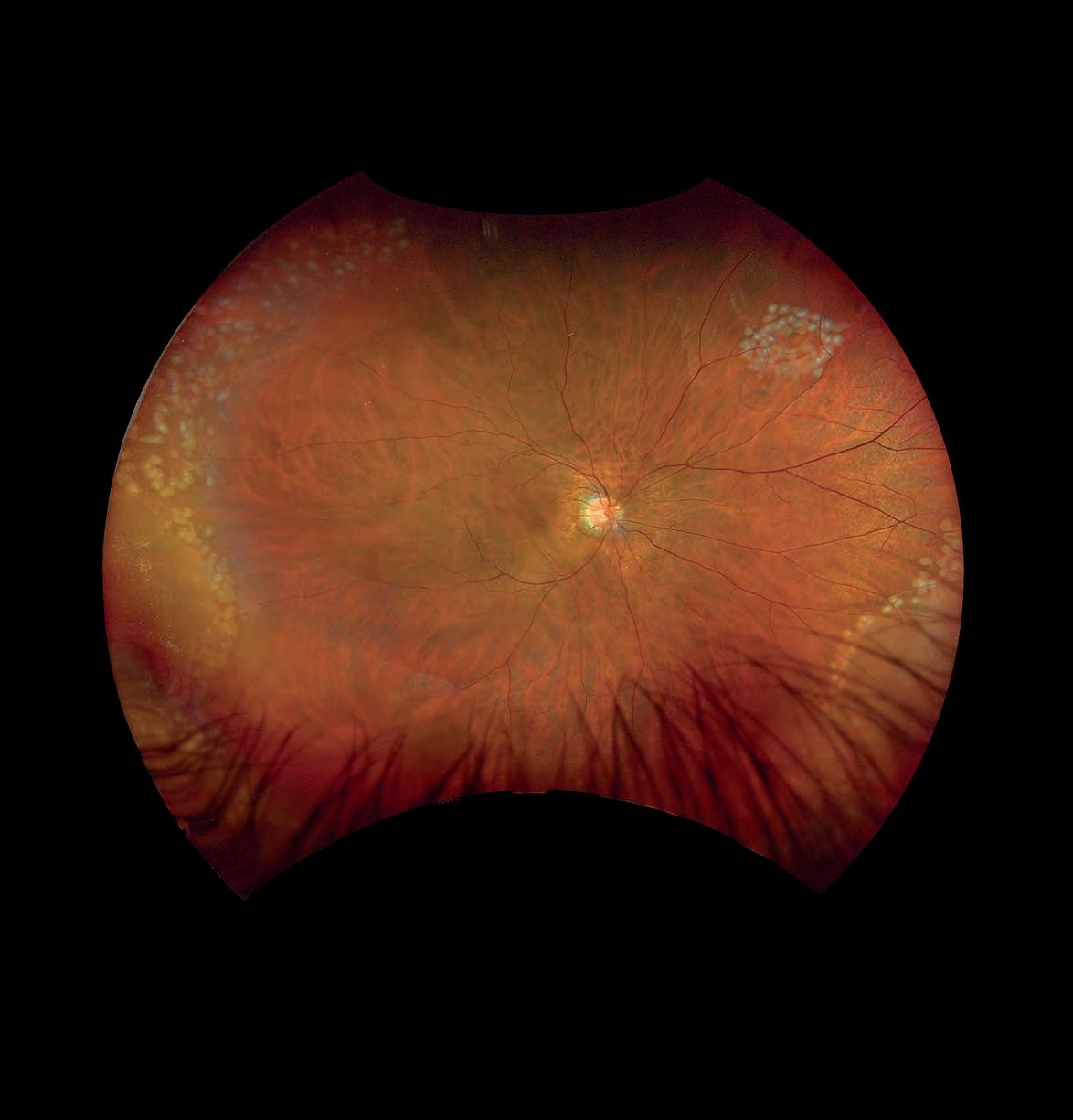
optomap®, the ONLY single-capture, 200° ultra-widefield retina image








For many optometrists, there comes a pivotal moment in their careers when starting their own practice becomes the next big step. And for some, it’s even more rewarding when they take the leap with their significant other by their side.
aunching a business can be daunting and lonely, especially if there is no one to share the burden. So why not launch one with a best friend, partner, or confidante? Investment in each other – as well as the success of the overall business – could translate into something positive.
This is a model that many independent optometry businesses across Australia have adopted, owned and operated by a husband-and-wife, mum-and-dad duo, and often with a high degree of success.
Insight sits down with three couples at various stages of running their own optometry practices, each sharing their pearls of wisdom, and how they reap the benefits of working with their significant other.
Throughout Mr Daniel Tracton’s 28 years in optometry, he has traversed independent practice as well as holding corporate roles. Recently, he decided to go greenfield, and opened his current practice, Tracton Optometrists, in Sydney's Bondi Junction in 2021 alongside his wife Ms Michelle Tracton.
Unlike Daniel, Michelle did not have a career in optics, but the satisfaction Daniel would get from his work rubbed off, and she decided to transition careers.
This, according to Daniel, was beneficial, as Michelle entered the business with “fresh eyes” and could view the needs of their local community from an outsider’s perspective.
“Michelle had been hearing about the optical industry for nearly 30 years. It’s like dinner time conversation, so she wasn’t really a stranger to the industry,” he says.
Michelle adds: “Dan would come home and say, ‘Someone had double vision and hasn’t been able to drive for 10 years. I’ve given them an optical correction that’s fixed their vision and now they’re back driving’. And I thought: ‘You did that in one day?’. This is a really appealing aspect of working in an optometry practice, you can literally see the difference you make to someone’s quality of life”
Working together wasn’t initially the plan – Michelle intended to help with the setup of the practice, and then decided to jump ship and join Daniel.

Now, she manages the practice, and works alongside the dispensing team.
During the setup, Daniel and Michelle recognised that there was a gap in their local market: there was no family-owned independent practice in the area.
Daniel was familiar with Ms Carolyn and Mr Peter Hewett’s (more on them below) practice in Mosman across the harbour, and the dynamics they had in place resonated with him. So, he sought to recreate a similar environment in his own practice, with a strong community feel and continuity of care for patients. Daniel first met Carolyn Hewett in the mid 1990s while she was coaching at the practice he worked at.
“Everything worked out very well with Michelle joining the practice. We never really considered working together – but we took advantage of this opportunity to invest our time and turn a dream into a reality,” Daniel says.
“We considered that by combining our differing skill sets, we could provide a gold standard, independent and family-owned optometry practice that provides excellent eyecare, beautiful eyewear, and specialty contact lenses, building long term relationships in our local community.”
Since opening the practice, a new paradigm for Daniel and Michelle to navigate is establishing a work-life balance.
For them, the biggest challenge is creating boundaries between professional and private lives.
“We come to work together. We leave work together. We talk about work outside of work hours – it infiltrates all parts of our life,” Michelle says. “However, our work is deeply rewarding so this is more of a challenge than a problem.
“We’re trying to create a balance but also accept that it’s not very easy to achieve if you’re committed to your work. And especially with those two years of setting up the business."
Daniel adds: “We had three days off over a recent long weekend, and we made a conscious effort to take a break from work and had a great weekend.
“We made sure we had a balanced time and didn’t have anything to do with work. But I think that’s the eternal challenge, and it definitely is harder if you’re working with your partner as you can just kick into work mode at any point.”
Above all, Daniel and Michelle reiterate the benefit of going into business with someone familiar as opposed to someone unfamiliar.
Daniel’s perspective as an established optometrist is that while optometry is ostensibly a primary health care profession and providing top quality care is the key priority, the people delivering it are equally as important.
“Having a great team is essential and knowing the person you are going into business with takes the risk out of getting your team right. Also, with a family business there is a long term stability to the team structure which is another valuable deliverable to patients,” Daniel says.
Michelle adds: “We have different strengths which complement each other and we’re confident in each other’s ability. If we divide the work in a way that plays to our strengths, it takes the guesswork and the luck out of starting a practice.”
Ms Carolyn and Mr Peter Hewett are a retired couple who boast more than 30 years in business together. With decades of experience as partners, they truly understand the secrets to achieving success together.
The Hewetts’ story begins in 1923, with Peter’s father and grandfather’s optometry practice in Martin Place in Sydney’s CBD. Peter joined the family business in the 1980s, marking the third generation of optometrists in his family.
“We have a history of family working in the practice. My grandfather’s sister worked in the practice and on the front desk and she was very good with people,” Peter says. “And then my mother worked with my father in the practice.”
Carolyn, an orthoptist, joined the practice as its manager in 1988. In 1993 they opened a second location in Mosman, which they ran until their retirement in 2021.
Ideally, the Hewetts suggest that couples have a deep understanding of each other’s character before diving into business together. This familiarity can make the process smoother and less uncertain.
Peter knew that he could focus in the consultation room, while Carolyn maintained a strong front-of-house. Working synergistically and trusting each other made for a well-rounded patient experience.
“One of the benefits is that you have continuity,” Peter says. “You don’t have an external force coming in trying to re-invent the wheel, because you’re working together.”
However, lack of boundaries with each other in terms of when to switch off work conversations was a persistent challenge in the household.
For example, there would be a marketing plan in place by the time the practice closed, which would be shared with staff. And, to the dismay of the employees, the plan would have changed overnight because Peter and Carolyn continued discussions after hours.
“One of the advantages of working together is you’re always working on the business. One of the disadvantages is you’re always working on the business,” Carolyn says.
Despite this, she adds that tackling issues daily, rather than during less frequent meetings, enables quicker and more efficient decision making.
“It also allows for immediate problem solving,” Carolyn says. “You can move very fast because you’re working through problems on a daily basis, not at weekly meetings or monthly meetings.”
Working with a person one has a close relationship with, such as a partner, often means business values and principles align.
However, Carolyn advises not to expect staff to share the same principles.
Instead, owners should be evolving with their staff to soften the impact when they do move on.
“Much of my responsibility in the practice was to train and release, because realistically, no one’s going to stay with you forever,” she says.
“You’ve got to have a good attitude, because they’re going to come to

you, you’re going to develop them, and then they’re going to leave for a bigger and better career.”
Carolyn adds that going into business with this mindset, and having the right support staff, can make or break the practice.
Peter adds that they knew when a staff member was ready to move on to their next step.
“We’d ask them, ‘What do you think you want to do with the rest of your life?’ And then we’d assist them to achieve that. This gave us time to bring someone else in,” he says.
“You need to be constantly evolving with your staff and having their interests first, because I think that makes an easier exit for people.”
The dynamic the couple brought to their practice was specifically sought out by patients. They complemented each other well, and were able to deliver eyecare at a high level.
“I looked after patient’s eye health and vision, and Carolyn would look after their eyewear,” Peter says, “But above this, we became part of the community.”
Carolyn adds: “I think people still crave being looked after and having someone that they can trust that they know and who’s consistent.
Continuity of care is so important.”
They say it made them more accessible and open for people to walk into the practice, and discuss their concerns with Carolyn, if Peter was busy with a patient.
“They knew they could talk to Carolyn, and there is no doubt that the information would get back to me,” Peter says.
The duo says that working together enabled them to prioritise quality eyecare, build lasting relationships with their patients and foster strong community ties, which to them, has proven most rewarding.
“Looking back, there isn’t much we would do differently because we dealt with issues as they came. We focused on providing good care and building relationships with our patients. Our patients appreciated the continuity of care, which is hard to find nowadays,” Peter says.
Carolyn adds: “Working together in the practice allowed us to provide high-quality care and build strong relationships with our patients and community. While it had its challenges, it was a fulfilling career choice.”
For anyone in a similar position, Carolyn advises couples starting a business together should do so if that is their life’s work. Otherwise, there is no joy.
“If you’re working as a team – there’s a different feeling behind it,” she says.
“For example, someone pulled into the business against their better judgement – and against their will to a certain extent – is going to affect the business. I think if people are going to work together, it shouldn’t be as a default; it should be as a career choice.”
In Melbourne, Ascot Vale Eyecare is a greenfield practice established in October 2023 by optometrist couple Mr Robert Nawrocki and Ms Simone Hibbert. Unlike the Tractons and Hewetts, both are practising optometrists.
After spending much time in the industry, the next obvious step for Robert and Simone was to establish their own practice.
Each toyed with the idea of starting their own individual practice –ultimately, it made sense to join forces and bring the best of both worlds together. Born and bred in this pocket of Melbourne, they knew the ins and outs of the area and were prepared to go greenfield.
“We arrived at the idea independently. But thought this made sense to be the next step in our careers. We had a lot of similarities – we grew up in the area and had similar ideas. It just made sense to do it together,” Simone says.
Robert adds: “Opening in metro Melbourne as an independent is tough,

but being embedded in the community helps.”
Duties – outside of clinical – fell organically depending on their abilities, such as social media administration or hands on related work.
“There have been tasks over the journey, where we’ve both had a go at them at the start, but some things played to each other’s strengths a bit more. Certain tasks have just naturally fallen into one domain or the other,” Simone says.
Having a wealth of optometry experience between them was advantageous for the clinical aspect of the practice, however, they lacked administrative acumen in the early stages.
“It helps to keep on top of the day-to-day processes earlier. Knowing the practice management software intricately from day one would have helped us. There are many things we’d do differently, but hindsight is 20/20,” Robert says.
In terms of establishing a business with a partner, Robert and Simone are advocates for striking a balance between following intuition and asking lots of questions.
“Trust your gut, talk to as many people as you can, and seek advice. There will be naysayers, but trust your instincts,” Robert says.
A well-informed intuition for the couple can be attributed to their length of optometry service, and the confidence that they’ll work well together.
“We’ve been in the industry long enough to have an idea of what we’re doing. I wouldn’t recommend it for new graduates, as it’s too challenging,” Simone says.
“It’s been challenging but rewarding: if you’re thinking about it, be confident you’ll work well together.”


This medicinal product is subject to additional monitoring in Australia. This will allow quick identification of new safety information. Healthcare professionals are asked to report any suspected adverse events at https://www.tga.gov.au/reporting-problems.

The momentum building behind EssilorLuxottica was a key theme at the company’s annual eyecare roadshow across Australia and New Zealand, as OPSM and Laubman & Pank optometrists took a moment to appreciate their contributions to the broader mission.
Few would have a better vantage point than Mr Carl James when evaluating the prospects of EssilorLuxottica-employed optometrists working in OPSM and Laubman & Pank stores today.

Starting his career in 1998 as a graduate optometrist at OPSM’s Bourke St store in Melbourne, he’s now into his 26th year with the business working under various parent companies. Both networks are now part EssilorLuxottica, a global leader in the design, manufacture and distribution of ophthalmic lenses, frames and sunglasses.
James is a key driver in the Australia and New Zealand (ANZ) region as senior vice president of retail & professional solutions operations, giving him a unique perspective bridging the gap between what’s happening at both a global and local level.
“There’s been a whole heap of evolution in the way that OPSM works, but also the eyecare industry in Australia and New Zealand,” he said. “And even though I’ve seen a huge amount of change and innovation in my time, I can put my hand on my heart and say right now is probably the most exciting time to be working with EssilorLuxottica as an optometrist.”
James was speaking before a packed room of optometrists at Sofitel on Collins for the Melbourne leg of EssilorLuxottica’s Eyecare Roadshow.
The events – spanning 17 venues including 11 in regional areas – took place throughout August 2024 to celebrate the more than 1,000 optometrists working in 400 OPSM stores and 50 Laubman & Pank locations across ANZ. For the first time, the event welcomed optometrists from the newly-acquired EyeQ Optometrists group.
But the roadshow is also an opportunity to provide vital business updates and learn from local optometry thought leaders.
Globally, the group is gathering significant momentum since the French lens and equipment manufacturer (Essilor) and Italian-based frames maker and eyewear retailer (Luxottica) joined forces in 2018.
Recent examples include the acquisition of a majority stake in Heidelberg Engineering – best known for its OCT technology – indicating growing interest in the medical technology space. The company is now tapping into the hearing industry too with new Nuance Audio glasses featuring integrated open-ear hearing technology. There’s also been the acquisition of clothing label Supreme that gives access to a new group of consumers across the world.
“It shows that our business is evolving quite significantly,” he said. “And will become so much more than what we do today.”
That ambition is reflected locally in ANZ.
One of the biggest advances of late has been OPSM’s remote optometry
model for Australian communities under-serviced by optometry. Starting in South Hedland, Albany, and Kalgoorlie, patients visit these OPSM locations and undergo a comprehensive eye exam alongside an in-person technician, while the optometrist works remotely in a metropolitan area like Melbourne or Sydney. Now, there are plans to roll the service out to many more locations across 2024-25.
In January 2024, EssilorLuxottica bought the 25-practice EyeQ Optometrists, an Australian-owned, optometrist-led company founded in 2007, with the practices to continue operating under the same brand.
James said it’s another example of how the company is “looking to grow and expand our reach to even more consumers in the Australian and New Zealand market”.
Another notable move was placing EssilorLuxottica’s professional solutions business and the direct-to-consumer business under one leadership. As a result, EssilorLuxottica’s most senior figure for ANZ, Mr Matteo Accornero, extended the scope of his responsibilities to lead the ANZ business strategy across both divisions. This allows the company “to make decisions that support the broader industry and aim to grow the whole market”, the company said.
But looking ahead, James is particularly excited about the multimillion-dollar investment in technology that will enhance the experience of the company’s optometrists.

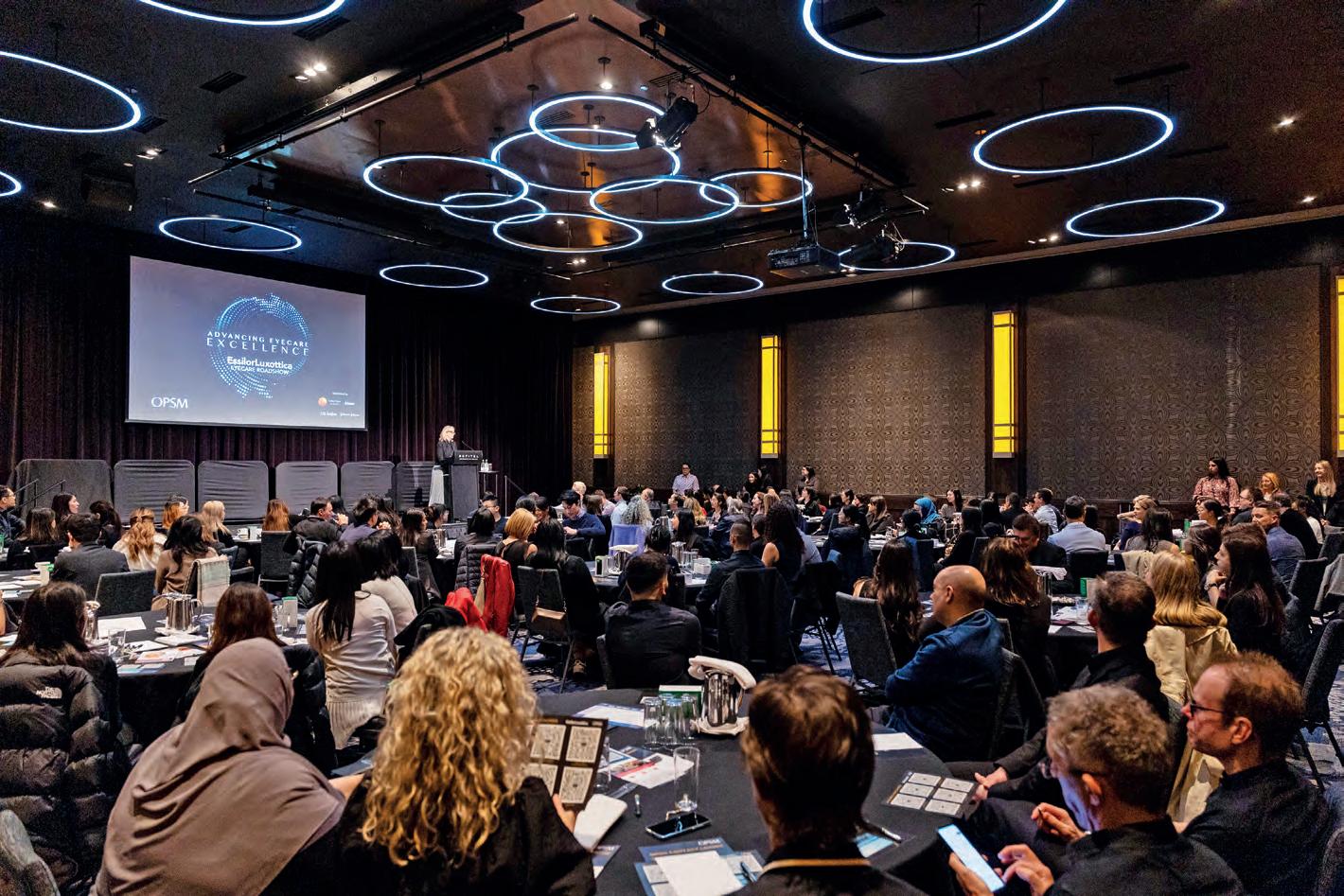
• Launching the Career Pathways tool to help optometrists advance their careers with EssilorLuxottica.
• J udy Orenstein, retiring after 47 years within the business across various Victorian locations.
• C elebrating employee rewards and benefits, including BRAVO bonus scheme, employee referral program, product allowance, Service Awards, and the opportunity to broaden impact through OneSight outreach clinics.
• O pportunity for optometrists to receive a complimentary professional headshot for their professional profiles.
EssilorLuxottica’s Eyecare Roadshow is also a chance to recognise optometrists doing exceptional things within the business:
Optometrist of the Year
VIC/TAS: Kieren Do (OPSM Highpoint)
SA: Samantha Widjaja (OPSM Tea Tree Plaza)
QLD/NT/NSW: Shaun Dingle (OPSM Mackay)
WA: Sophy Kyi (Laubman & Pank Mandurah)
NSW/ACT: Daniel Wong (OPSM Castle Towers)
NZ: Alice Ku (OPSM Queen Street)
Myopia Excellence Award
VIC/TAS: Grace Hand (OPSM Eye Hub Hawthorn)
SA: Jing Ma (OPSM Mitcham)
QLD/NT/NSW: Jacinta McInnis (Laubman & Pank Wilsonton)
WA: Hailey Tong (OPSM Riverton)
NSW/ACT: Ridwan Usamah (OPSM Gungahlin)
NZ: Lesley Kung (OPSM Northwest)

Soon across ANZ, 80 next-generation ultra-widefield retinal imaging devices will be rolled out. Plus, 55 new OCT units will be installed incorporating biometry – a key tool in OPSM & Laubman & Pank’s comprehensive myopia service.
“But these investments, growth plans and expansion plans don’t matter if our people don’t bring them to life in the practice, in-store, and in the consultation room,” he said.
“I’m really proud to work alongside such a wonderful group of eyecare professionals who get to bring together all of that work we do all across the world.”
Ms Sephora Miao, recently appointed to the newly created role of eyecare and medical & professional affairs director for ANZ, is an influential figure in EssilorLuxottica’s eyecare strategy in the region and was key to securing the significant equipment investment referenced above.
She’s also a fixture at the roadshow events that “always bring our optometrists together in meaningful ways”.
“This year’s roadshow focused on advancing eyecare excellence, bringing together our business initiatives to deliver excellence at the global scale, locally within ANZ, and in each and every store,” she says.
“The roadshow celebrates great eyecare at the heart of our business and the important role our optometrists play in our delivery of everyday excellence.”
One way EssilorLuxottica embodies this is through its support for regional and remote communities.
During the past year, more than 100 optometrists travelled across Australia and New Zealand to bring eyecare to areas currently under-serviced by optometry. In addition, 76 new optometrists joined the network in regional and remote locations.
Miao also celebrated the landmark remote optometry service, which is an example of what can be achieved by “combining our cutting-edge technology with the expertise of our optometrists”.
Delving further into this, she highlighted the Connect platform that powers the remote optometry consultation. Now there are plans to roll out this software in stores with OPSM’s Clarifye digital eye exam journey, helping to elevate key touch points in the customer experience.
According to Miao, this is all to do with a library of patient education tools optometrists can access on Connect. But arguably its most important function is an ability to harmonise data from various instruments such as ultra-widefield retinal devices, OCTs and visual field systems.
“What’s great is that our optometrists will have the ability to centrally

Often one of the hidden gems in a business acquisition is the talent that comes with it.
For EssilorLuxottica, purchasing EyeQ Optometrists earlier in 2024 wasn’t only a chance to tap into new communities with 25 more locations, but an opportunity to bring 200 employees on board. Optometrist Mr Mark Koszek, who co-founded EyeQ, sits prominently among them.
He’s someone with unique expertise when harmonising the clinical and commercial aspects of an Australian optometry business – and at scale.
So, EssilorLuxottica didn’t need to look far when deciding the keynote speaker for its Eyecare Roadshow events in 2024 where Koszek synthesised 28 years of intellectual property to deliver the captivating final presentation for the evenings.
Few stones were left unturned: thought-provoking tips to improve business performance were mixed with insights about crafting “the perfect work day” and clinical pearls from recent cases, plus more.
“When we’re undergraduates, we learn a lot about the clinical side,” Koszek said.
“When we get out into the real world, we also encounter a commercial aspect and some may find it challenging to meld the two together.”
Optometry is a competitive industry and it’s important for practices and the people within them to stand out.
“You’ve got to be memorable, you’ve got to be passionate, you’ve got to be caring about your patients.”
He recalled his first job in 1996, and a newsagent in the mall where he worked.
“She was the most boisterous, over-the-top person I’ve ever met and she had the best business ever. There were about 30 people there at any one time and she knew everybody by name.
“I remember her name – it was Mary. But her husband didn’t have the same personality. I’ve got no idea what his name was. Which just goes to show you that personality really counts.
“That can be as simple as knowing people’s names, what they do, and being part of their lives.”
That meant not just seeing a patient as someone to treat but educating them, so they are inspired to take ownership of their eye health.
Koszek saw that as the “primary role” of the optometrist.
“Once they take ownership, our job has become that much easier, and that also helps from a business perspective as well, because then patients will value what we’re providing them,” he said.
“We want our patients coming back and asking for the tests. I smile then, because I’ve done my job, I’ve educated them.”
Business success follows organically if the optometrist provides exemplary clinical care, he said.
That success often came down to making sure that businesses had the right processes and systems.
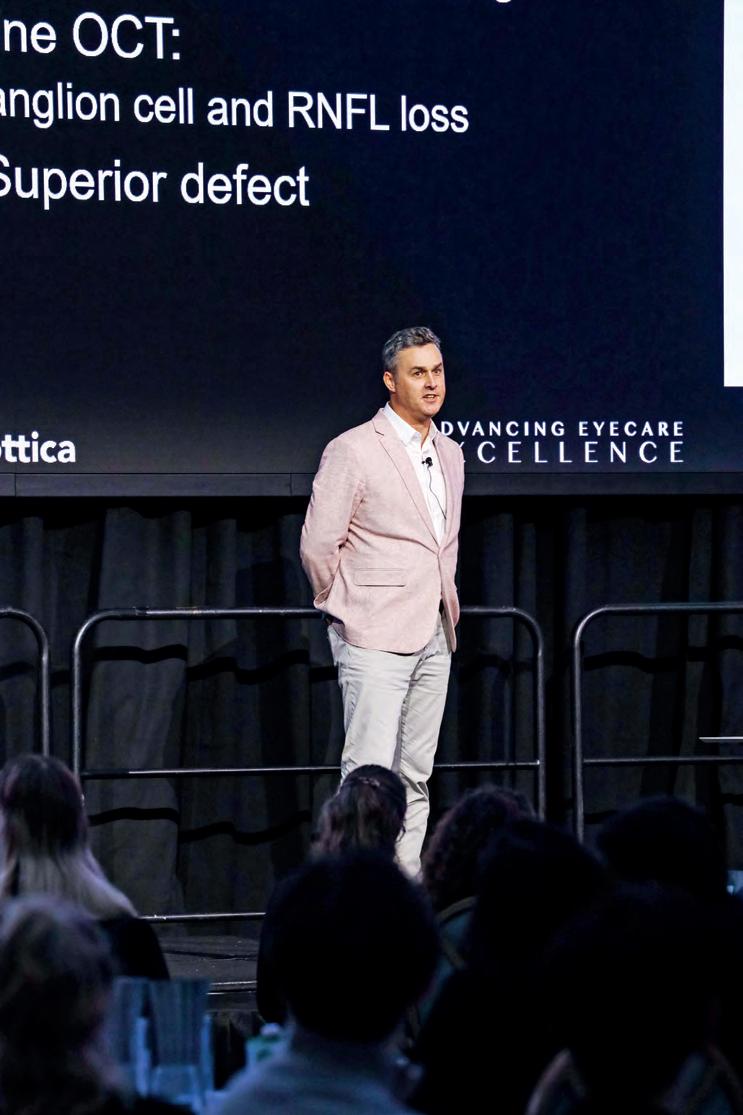
“Have you got a great roadmap in place, in terms of the customer journey,
review all of the patient data,” she said. “It’s an excellent way to streamline the consult flow.”
While EssilorLuxottica ANZ is yet to fully bear the fruits of Connect just yet, it can only help to fuel already-high satisfaction among its customers.
Miao said the company was encouraged by its Net Promoter Score – a measure of patient satisfaction by looking at their likelihood of recommending a given practice.
“This has increased to 86 as an average across the board, which is a truly world class result.”
EssilorLuxottica has made no secret of its emphasis on myopia management across its global business – a major paediatric public health issue expected to affect 50% of the world’s population by 2050 if current trends continue.
Locally, this has culminated in the Myopia Leaders group, a panel of optometrists across Australia and New Zealand who advocate, educate, and lead best practices in this space.
By establishing the group, EssilorLuxottica wants to drive an elevated and more consistent approach across the OPSM and Laubman & Pank store network.
The program’s success has seen the Myopia Leaders group grow from 22
make great recommendations about their eyecare and eyewear.”
to 38, according to ANZ optometry engagement manager Ms Amy Pillay.
At the 2024 roadshow – where a new Myopia Excellence Award was introduced – Pillay referenced a survey of optometrists across the network that highlighted a common challenge to providing myopia control: parental awareness of the condition.
Based on this input, new tools have been developed to expand the myopia standard of care, including resources to help optometrists and retail staff understand the various modalities and communicate the value of myopia management to patients.
Optometrists have access to a range of myopia control solutions including the Essilor Stellest lens. The latest clinical evidence showed that at five years, Essilor Stellest slowed axial elongation by 0.72mm and myopia progression by 1.75D on average. It also showed that the efficacy in slowing myopia progression was sustained in older children up to 18 years old.
“We now have a myriad of resources available to support our optometrists to provide myopia management,” Pillay said.
“When I started studying optometry, I did it because I wanted to help people, and this is our opportunity to make a difference in a child’s life all the way to adulthood.”
The EssilorLuxottica Eyecare Roadshow attracted more than 600 in-person attendees, with remote participation facilitated via live-streaming to ensure every optometrist in the network was included.
Brought to you by the founder of MIGS, iStent infinite® is built on the #1 MIGS platform worldwide and is designed to provide powerful technology that delivers foundational, 24/7, long-term IOP control in glaucoma patients on ocular hypertensive medications, including those who have failed prior medical and surgical intervention1. iStent infinite® can be performed in combination with cataract surgery or as a standalone procedure.

REFERENCE
1. Glaukos Data on File.
IMPORTANT SAFETY INFORMATION
INDICATION FOR USE. The iStent infinite® Trabecular Micro-Bypass System Model iS3 is intended to reduce intraocular pressure in adult patients diagnosed with primary open-angle glaucoma (POAG) currently treated with ocular hypertensive medication. The device can be implanted with or without cataract surgery. CONTRAINDICATIONS. The iStent infinite System is contraindicated under the following circumstances or conditions: In eyes with primary angle closure glaucoma, or secondary angle-closure glaucoma, including neovascular glaucoma, because the device would not be expected to work in such situations; In patients with retrobulbar tumor, thyroid eye disease, Sturge-Weber Syndrome or any other type of condition that may cause elevated episcleral venous pressure. WARNINGS. Gonioscopy should be performed prior to surgery to exclude congenital anomalies of the angle, PAS, rubeosis, or conditions that would prohibit adequate visualisation that could lead to improper placement of the stent and pose a hazard. MRI INFORMATION. The iStent infinite is MR-Conditional, i.e., the device is safe for use in a specified MR environment under specified conditions; please see Directions for Use (DFU) label for details. PRECAUTIONS. The surgeon should monitor the patient postoperatively for proper maintenance of IOP. Three out of 61 participants (4.9%) in the pivotal clinical trial were phakic. Therefore, there is insufficient evidence to determine whether the clinical performance of the device may be different in those who are phakic versus in those who are pseudophakic. ADVERSE EVENTS. The most common postoperative adverse events reported in the iStent infinite pivotal trial included IOP increase ≥ 10 mmHg vs. baseline IOP (8.2%), loss of BSCVA ≥ 2 lines (11.5%), ocular surface disease (11.5%), perioperative inflammation (6.6%) and visual field loss ≥ 2.5 dB (6.6%). CAUTION. Please see DFU for a complete list of contraindications, warnings, precautions, and adverse events. © 2024 Glaukos Corporation. Glaukos® and iStent infinite® are registered trademarks


The award-winning hotel pool allowed patrons to swim with the fish, but it was the deep dive into various eye conditions and diseases that was keeping optometrists captivated during Specsavers’ 13th and biggest clinical conference yet.
The old saying goes that you should never work with children or animals.
But Dr Rushmia Karim would disagree, especially regarding the former, and she offered plenty of tips and tricks for eyecare professionals at the 2024 Specsavers Clinical Conference (SCC), should those professionals be called upon to bend a knee and look a fidgety young patient in the eye.
Dr Karim, a New South Wales paediatric ophthalmologist, was one of more than 20 eyecare professionals sharing their expertise at the annual Specsavers event, this year hosted on the Gold Coast on September 14-15.
More than 400 optometrists attended in-person and participated in a range of sessions on the main stage and fringe talks over the two days, with another 450-plus watching online from around Australia and New Zealand. This year’s conference also included eight on-demand talks available for optometrists to view at a time that suits them.
Subjects included paediatrics, neuro-ophthalmology, posterior eye conditions, anterior eye therapeutics and inflammatory eye disease, covering many conditions that optometrists might encounter in their practices, the tools and techniques they might use, and the treatments they could adopt.
As well as Dr Karim, other key speakers included Dr Brendan Cronin, corneal and anterior segment surgeon, and director of education at the Queensland Eye Institute, who focused on dry eye treatments in an entertaining, balloon-filled presentation; Associate Professor Chameen Samarawickrama, a consultant eye surgeon and clinician-scientist who spoke on the complexities of diagnosing and treating watery red eye; and Dr Brian Ang, whose presentation on proactive glaucoma care covered the impacts of lifestyle, diet and stress on the debilitating condition.
All of the presentations over the two days and the on-demand talks provided insight and practical knowledge to continually develop optometrists’ clinical knowledge, contributing up to 20 hours of CPD content.
The conference weekend kicked off with an uplifting update on Specsavers’ impact in the eye health sector, by the company’s clinical services director for ANZ, Dr Ben Ashby.
He opened his presentation by reflecting back to 2020, and Specsavers’ aim to reduce rates of avoidable blindness across Australia and New Zealand.
“We felt that an industry standard of probably 60 to 70% of people with avoidable blindness being detected wasn’t good enough, that a 50% undiagnosed rate for glaucoma wasn’t what we should deliver in this country, and that diabetes as the leading cause of blindness in the working age was unacceptable,” he said.
“We set ourselves the ambitious goal to get to a 95% detection rate of avoidable blindness, and . . . incredibly, we are already at 92%.”
Because of this relentless focus, Specsavers optometrists are now detecting diseases and conditions that could lead to avoidable blindness in more than 130,000 people each year.
In addition, over the past five years, more than 215,000 cases of glaucoma

“We have now found 80% of all of the undiagnosed glaucoma in the community for both Australia and New Zealand. Over the past 12 months, more than 5 million people had trusted Specsavers with their eyecare, with more than 3,500,000 of those Aussies and Kiwis receiving vision correction to help them “live better lives with better sight".

Dr Karim admits that paediatric ophthalmology can be “daunting”.
“Sometimes my heart sinks when I see a whole room full of children,” said the former head of the Paediatric Eye Service at Britain’s Prince Charles Eye Unit, part of the Royal Berkshire Hospital Trust.
Dr Ashby also shared some impressive data from KeepSight, the program Specsavers has been a founding partner of alongside the Australian Government and Diabetes Australia, which reminds people with diabetes to keep up regular visits to check their eye health – “because the biggest risk factor for losing your sight through diabetes is not attending regular appointments”.
“It is working,” he said. “Specsavers optometrists have registered over one million visits for their patients living with diabetes. Reminders sent out by KeepSight have increased the return rate by 20%.”
That meant that, over the last 12 months, Specsavers optometrists had found more than 5,000 cases of advanced diabetic retinopathy that needed treatment by ophthalmologists.
Meanwhile, Dr Ashby said the company had launched its Early Career Optometry (ECO) Program in 2023, with 100 optometrists having already been through the program. Following conversations with graduates, the Professional Development team identified the opportunity to add the ECO Program to continue supporting optometrists beyond the initial two-year Graduate Program. Next year, Specsavers will pilot the Senior Optometrist role as an extension of the ECO program, leveraging the expertise of experienced practitioners as mentors, further supporting optometrists throughout their career.
And dry eye disease would have a heightened focus in Specsavers stores, Dr Ashby said.
“For a long time, we’ve been aware that 30% of the patients in our store are suffering with some form of dry eye.
“We’ve started the IPL pilot and it’s currently live in three stores in Australia, with an additional six stores joining the pilot by the end of the year. We will continue the IPL pilot into next year, as it is a great, affordable long-term treatment for our patients with dry eye.”
Another key focus was the Trusted Expert Series (TES), which supports Specsavers' network of 1,500 optometrists to understand the importance of effective communication in establishing relationships with their patients to achieve the best health outcomes. In the year ahead, TES will focus on enhancing the communication skills of both optometrists and dispensers, to help build trust and better understand patients’ lifestyles for the best possible clinical recommendations.
Speaking of trust, Dr Ashby also made a special mention to thank all Specsavers optometrists who helped Specsavers to be named Most Trusted Optometrist for the fifth year running by Reader’s Digest Magazine. He also called out the commitment and achievements of more than 500 recent graduates and early career optometrists who have chosen to build a career at Specsavers.
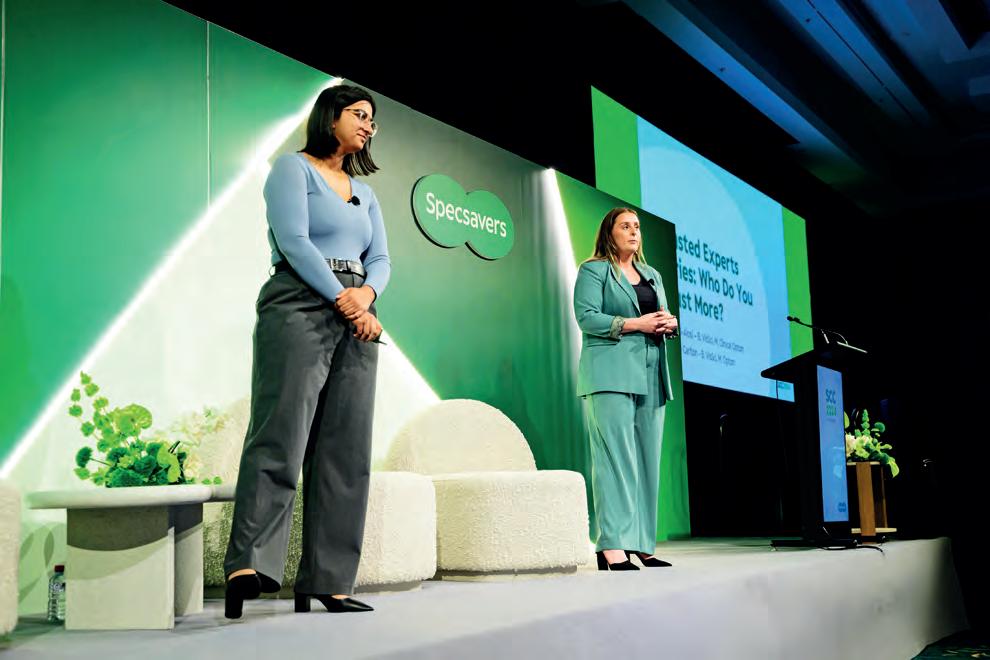
“Children are unpredictable. You’re worried if you miss anything, don’t really see the back of the eye, don’t really get that script correct.”
Her advice was to go back to “first principles and simplicity”.
“You don’t really have to go into depth in every single clinical consultation, but there’s a few things that will give you a good clue as to whether this is a ‘red-flag’ patient or someone just needing a standard assessment.”
That included asking the right questions: Was the child born full-term? Had they been immunised? Were they there because mum’s gone for an eye test and brought in their child, or were they in for a specific problem?
Other questions could include medications the child was on, what they were eating and drinking, and their bladder and bowel movements.

As much as a full room of children might be daunting, Dr Karim liked to observe children in the clinic, especially when they didn’t know she was looking.
“I can be a bit of a stalker: are the children in the clinic playing, are they watching Bluey, what’s their visual behaviour when they think you are not watching them?”
And she reminded the audience that they had a duty of care to report signs of abuse and non-accidental injuries, which should be reported to GPs and other authorities.
Examination was all about “toys, toys, toys. Have as many things as possible in your toolbox”.
One of her favourites was a wind-up mouse, which kept the child stimulated and allowed her to watch the fixing and the following of the toy.
“But use toys that don’t make a sound because sometimes the child will track the noise, not the vision.”
Visual charts could also be a challenge.
Dr Karim said some charts could be 30-40 years old and not appropriate
Specsavers has announced its winners of the Doug Perkins Medal and Dame Mary Perkins Award for 2024 at its annual clinical conference on the Gold Coast. Stores in Port Lincoln, South Australia, and Blenheim in New Zealand were awarded the Doug Perkins Medal, acknowledging stores “that consistently upheld the highest standards of clinical excellence”. The 2024 Dame Mary Perkins Award was presented to two optometrists who demonstrated “an exceptional commitment to patient care, going above and beyond to make a positive difference”. They were Ms Sarshia Hua, from Specsavers Toowong, in Queensland, and Mr Kevin Chen from Specsavers Mt Wellington, in New Zealand.
for modern children, and less formal charts were fine to use.
Often, parents were harder to deal with than their children, she said.
She advised careful counselling of parent expectations.
“Parents love surgery; half of my clinic is talking them out of surgery,” she said.
That included when children presented with amblyopia, for which the treatment was usually a mixture of patching and glasses.
“I start children in glasses first, get them used to it. Then I can introduce patching.”
Atropine was also an excellent treatment, especially if the child was not keen on patching.
And parental supervision was “the key to compliance; it will make the world of difference. Tell them it’s a marathon, not a sprint.”


That covered pressure-independent mechanisms for glaucoma progression, including vascular factors that could reduce blood flow through the body and eyes, cellular factors such as mitochondrial dysfunction and axonal degeneration, and even external factors such as UV light exposure and mental stress.
He said there was no medical consensus or specific guidelines on neuroprotection, but he believed protocols and proactive glaucoma care that emphasised a healthier, holistic lifestyle, supported by vitamins and botanical supplements like nicotinamide (vitamin B3), methylcobalamin (active vitamin B12), saffron, bilberry, and gingko biloba could help reduce risk and vision loss.
Case studies had shown an improvement for people following the neuroprotection protocol, he said.
“Start the protocols early – don’t wait until it’s advanced, don’t consider it a last resort in attempt to delay surgery.
“And don’t forget regular monitoring; early detection equals early intervention equals better outcomes.
“Optometrists can be the coach along their patients’ eye health journey.”
On the Sunday, Ms Acyel Al-Alosi and Ms Virginia Carlton, from Specsavers’ Clinical Performance team, issued an entertaining challenge to attendees to lift their communication in order to build greater trust with patients.
They said those in the venue and online had learnt a great deal over the two days of the conference.
“But if you don’t know how to communicate it and your patients don’t trust you – how can you improve their sight?.”
Dr Brian Ang, a Melbourne glaucoma specialist and co-founder of Nutravision, told the conference about the influence of holistic lifestyle choices on the progression of glaucoma, an area rarely discussed.
He felt optometrists could play a key role in coaching patients along their “eye health journey”.
His “five pillars” would help patients address and manage the risk of the debilitating eye condition
They included a focus on physical activity, stress management, restorative sleep, diet and nutrition, and what he termed neuroprotection.
“Exercise is good for your eyes,” said Dr Ang. “Between 35 and 40 minutes of aerobic exercise each day can improve blood flow, reduce pressure, and slow vision field loss.”
Strength training and yoga were also recommended, although he cautioned that people should breathe out during exertion to avoid pressure build-up around the eyes, and some yoga positions could have a similar affect.
“Mental stress can be overlooked for its impact on glaucoma,” he said.
Between 45 and 60 minutes of daily meditation was shown to reduce eye pressure by up to 25%. Also, deep breathing exercises: “Three times daily, 6 breaths a minute, 5 seconds in and 5 seconds out.”
He also recommended 7-9 hours of sleep each night, but “don’t sleep with the affected eye facing downward into the pillow”.
There was some bad news for coffee and alcohol drinkers.
While fresh food and vegetables had been shown to lower the risk of glaucoma by up to 79%, and vitamins A, C and E, Omega-3 fatty acids also helped, the results were mixed for what we drank.
Hot tea could reduce the risk by up to 74%, but caffeine was shown to increase eye pressure by 1-6 mmHg. And more than two cups a day could increase the likelihood of glaucoma fourfold.
Alcohol could reduce eye pressure temporarily, but over the long-term, alcohol increased glaucoma risk, even at intake levels below the current UK and US guidelines.
Neuroprotection was also a key factor, said Dr Ang.
Better communication saved time, it allowed the optometrist to focus on the patient and improved follow through with recommendations.
It led to more accurate diagnoses, better outcomes for patients and less risk of treatments failing.
The pair used role play to demonstrate how asking the right questions and using language that was less clinical and more appropriate for the patient could build more trust and lead to compliance and better outcomes, for the optometrist and the patient.
“That means getting more detail about the person’s day, their work duties and how they use their eyes,” they said.
“Stronger communicators can dive into their patients’ concerns.”
Appropriate language was important too.
“Use words that have meaning for your patients. Many people think of their vision in terms how well they can drive, watch TV, read a book, rather than being long- or short-sighted.
“So, a recommendation that these glasses will improve your distance vision does not have the same impact as these glasses will improve your driving and watching TV will be more comfortable.”
Using more relatable language would support patient compliance and follow-through.
In the decision-making process, it was important to obtain a mutual agreement with the patient.
“Find common ground to respond to their unique needs.”
“Use inclusive language, use words that have meaning to them, and use your expertise – ‘let’s walk through what our best options are’.”
Optometrists who took a more patient-centric approach were more likely to meet expectations and have higher patient and job satisfaction.
This was about “what kind of optometrist do you want to be", they said.
“Do you want to be one that is proactive and can adapt to meet your patients’ needs?
"Or do you want to assume that, because the word ‘optometrist’ is on your door, patients automatically understand and trust you?

Outreach work is an important characteristic of many independent optometry practices across Australia and is something George & Matilda Eyecare is keen to support when negotiating with practices to join its network.
Dr Jelle de Bock counts himself among the throng of Australian eyecare professionals willing to leave the comforts of their practice to venture into far-flung communities so patients don’t have to travel far for their eyecare.
It’s a unique feature of the Australian ophthalmic landscape afflicted by the oft-quoted “tyranny of distance”, with outreach work proving an important lifeline for regional and remote patients to keep on top of their eye health and vision needs.
Every eight weeks, de Bock packs his frames and testing equipment at Fleurieu Optometrists in Normanville, a George & Matilda Eyecare (G&M) practice located on the Fleurieu Peninsula south of Adelaide, and heads across the channel to Kangaroo Island, population about 5000, with his wife Luanne, an optical dispenser.
There, they spend the week seeing patients. With another provider visiting “sporadically”, they’re the only ones offering true continuity of care on the island. There’s also a visiting ophthalmologist, but no extensive diagnostics or surgeries are performed locally.
“We now go eight whole-weeks of the year to Kangaroo Island. We go across on a Sunday and set up, test Monday through Friday and come back Friday nights and we’re always fully booked,” de Bock says. With therapeutic-endorsement, he can prescribe all optometryendorsed scheduled medications for the eye. He looks to provide all-round care for patients on the island whether that be glaucoma drops, uveitis treatment, foreign body removals, plus many other ocular conditions.
“I will refer to the visiting ophthalmologist when required and refer to ophthalmologists back in Adelaide when we need to. But otherwise I will
treat them there so that they do not have to go to and from the island; this is the most fulfilling part about practising regionally for me.”
Maintaining his Kangaroo Island service was a non-negotiable for de Bock when deciding their independent practice at the time, Fleurieu Eye-Care, which they started in 2004, was a good fit for G&M five years ago.
It’s the same for many other G&M optometrists in the network who provide outreach services in areas such as King Island and Queenstown in Tasmania. One practice, G&M Eyecare for Maroubra Optometrists, visits eight communities in outback New South Wales stretching from Walgett to Bourke.
After running their practice for 15 years as sole operators, de Bock and his wife were tired of the after-hours administrative burden.
“The offer from G&M came across and we were sitting there thinking this is too good to be true. We were already using ZEISS lenses, optomap imaging and suppliers G&M worked with. We were already running the store in the same fashion that G&M wanted and very little needed changing when we came on board,” he says.
“After a year of looking into it, we realised it was the real deal and joined the network in 2019 and have been very happy with the decision.”
He was also buoyed by the support G&M would continue providing for his Kangaroo Island outreach. When he visits the island today, de Bock works out of a full-time leased premises.
They leave a few items on the island such as an old chair and stand and reception equipment, but the retinal camera, phoropter, visual field machine, frames and a newly-acquired OCT are transported to and from the island for each outreach trip.
For de Bock, a passion for regional and remote optometry spawned early in his career.
At the time (1997-2002), he was proving himself as a graduate optometrist at Vision Centre located in and around Adelaide’s CBD. When most people were winding down on a Friday, he’d be sent 1.5 hours south to a branch in Yankalilla to run a clinic for locals.
“I found I was seeing a much broader spectrum of people and conditions. In Adelaide, I was working in Rundle Mall and Marion and in


those locations you didn’t get to see the pathology that you saw rurally,” he recalls.
De Bock eventually left and established his own two-day-a-week independent practice, Fleurieu Eye-Care, in Normanville, the neighbouring town to Yankalilla. It’s an hour and a half south of Adelaide’s CBD and is the last major township before jumping on the ferry to Kangaroo Island. With the next closest towns at least 30 minutes away, de Bock quickly realised he’d carved out a niche with a large catchment of around 10,000-15,000 people.
To make ends meet, he also performed locum work for Laubman & Pank which involved outreach clinics to Kangaroo Island.
“But within 12 months, I was working five days a week in my own practice; it was clear this was an area that needed help. I thought this would be a great place to establish a practice and as soon as people realised they didn’t have to travel, then hopefully it’ll make a business for itself – and it did,” he says.
“After still locuming on Kangaroo Island, people there started asking me, ‘why are you doing this work for someone else, why aren’t you doing it for yourself?’. And I thought, ‘yeah, good point’.”
Fleurieu Eye-Care flourished, doing so well that it eventually captured the attention of G&M – and the rest is history.
De Bock is grateful of the support he continues to receive for his Normanville practice and outreach work, especially from Ms Tanya Verrenkamp, G&M’s regional manager for Victoria, South Australia and Western Australia.
Of the 15 practices within her remit, de Bock’s is the only one providing outreach work.
She says one of G&M’s characteristics is a “patient-first” mentality, hence why the business supported this outreach work.
“They do long days over on Kangaroo Island, working from 8am through to 6pm or sometimes 7pm, depending on how many people need their services,” she says.
“We’ve recently upgraded the systems over there as well, including sourcing a new OCT. That’s about ensuring the best possible examination for patients. Each time they return, in addition to testing, they provide the patients seen on the previous trip with a fully adjusted set of glasses they can wear. There’s an emphasis on doing as much of this face-to-face to ensure patients receive the outcome as hoped for.”
Verrenkamp says having the support of a large network meant it was easy for de Bock to ensure his orders were delivered on time. But having the support of a head office with subject matter experts is also useful when it comes to leasing and other business matters.
“It takes a lot out of Jelle and Luanne because they’re long days, but it’s

such rewarding work for them – and they get so much wonderful customer feedback. G&M is always happy to support this important work.”
Further south, in Tasmania, conducting clinics on the road with portable retinal cameras and slit lamps is the norm for several G&M-owned practices.
In fact, practices down there providing outreach have specially designed “country packs” so they can safely transport completed specs and contact lenses.
The network operates 11 practices under the Eyelines brand (G&M’s first acquisition back in 2016). Of them, four practices – Burnie, Legana, Kings Meadows and Sorrell – run outreach clinics in several small communities, cycling through the townships every two to six weeks, with clinics often run in leased-out community spaces like hospitals.
“I’ll tell you something, my guys are so proud of their outreach work, they’re always so pumped and passionate about it,” says G&M’s regional manager for Tasmania, Ms Jody Mitchell.
“They don’t mind covering the distance to deliver this eyecare, it’s a major part of what they do, they have an excellent following because of it, and they’ve all got their processes so well down pat.”
Much of the work involves vision care – whether it’s updating scripts, prescribing multifocals or recommending contact lenses. They’re also checking their eye health, with diabetes front of mind. The optometrists are pushed to their scope to manage as much as they can themselves. But sometimes an ophthalmology referral is required, with family needing to step in to take the individual to a metro area.
Some of the most impressive outreach work Eyelines does in Tasmania occurs from the Burnie practice’s north-east post where they head across the Bass Strait to King Island.
“There’s really no other way for that community to have their eyes tested, so the team goes across there two-to-three days at a time, while also doing a circuit to Queenstown and Rosebury [located more than 100km south of Burnie],” Mitchell says.
The Legana practice also has a unique arrangement. It has a dedicated G&M clinic 40 minutes away in Georgetown.
“We’ so proud of the service they offer there. The patients there aren’t often mobile enough to get to the cities,” Mitchell says.
“It’s such a necessary service for these communities: imagine getting a floater in your eye or you can’t see, plus you can’t drive an hour and a half to go and see an optometrist.
“We can essentially pick up the practice and take it to them – and that’s so satisfying.”


Teamwork, timing and key relationships with people and companies supplying stock are all integral to getting the most out of your frames collection, for the customer and the business.
When it comes to optimising your frames stock, rotating your inventory and getting your practice cranking, two heads are better than one.
Teamwork in the store and building a trusting relationship with suppliers are key to success, say a number of industry professionals.

Dr Katherine Duong, co-owner and optometrist at Theia Optical in Five Dock, Sydney, keeps a close eye on the frame stock and selections, but advice from customers, colleagues and her suppliers is vital to helping build a better and more profitable picture.
She started the greenfield independent practice about three years ago with business partner Dr Anna Tang. It was one of the few good things to come out of COVID, especially after both were “let go” from their optometry roles as the global pandemic spread and lockdowns started to bite into businesses.
“But COVID allowed us to realign our goals, and really forced us to work on them. That’s when we decided to start our own practice, where it would be located, and what we wanted to specialise in.”
The demographic in their area is largely European, and features a big Italian community. They have a predominantly older clientele, with conservative tastes in eyewear.
Quality and good brands are important, but they don’t like anything that’s “too loud in terms of branding and logos” or with colour or style.
Cost is not a key concern, despite ongoing worries about consumer rising prices and their impact on spending across Australia.
“We’re a boutique clinic catering to mid- to high-end eyewear,” says Duong, “so when people come into our store they don’t expect the cheapest frames.”
There is the odd person wanting to re-use their frames and simply replace the lenses, but that has not been a concern “because we always encourage patients to have a really good quality frame that they can actually reuse”.
As part of the work to maintain that quality and meet their market, Duong and her team keep a close eye on their stock and whether there are gaps in price points and brands.
“We try not to duplicate too much and make sure that we have a large range,” she says. “We also consider what is our best seller, what type of designs tend to sell better, whether it aligns with our target audience.”
They try to keep their stock as fresh as possible, with the support of a regular “aged stock report” generated by Sunix.
“It’s one of the patient management systems, but essentially it allows us to review stock that is older than 12 months, or things that don’t sell well,” says Duong. “So we’re able to clear this stock more regularly, so that our range is always fresh.”
Rotation of stock depends on the brand.
“If it’s quite popular and sells quite quickly, I find that we don’t need to rotate
it as much. But if there’s a brand that’s a little bit more stagnant, then it’s just something that we need to focus on and try to work with the supplier to try to have frames that are maybe more appealing to our demographic.”
Duong is heavily involved in frame selection and rotation but she also leans on the store’s optical dispenser and other staff.
“They tell me, ‘Oh, we might be missing stuff from this particular brand, we probably need a bit of a top-up.’”
The relationship with their supplier is also vital.
“When we first opened our store, we didn’t know what the target demographic would really want, so having that support of the supplier, and also flexibility, really helped us in the beginning.”
Those relationships have endured and helped the store succeed.
“We’ve worked with suppliers that allowed us to say, ‘OK, this is not working for our demographic. Let’s be flexible and switch it out.’”
That’s a win for both store and supplier, “because we have more popular frames on the shelf and that means we’re both able to make more sales”.
Even better if that strong, trusted relationship is with a supplier carrying a good number of brands.
“It allows you to negotiate things like discounts and marketing material better; it also reduces all of our freight costs, and also allows us to have a bit more marketing support, in terms of things like window decals and different display frames.”
She’s a “little more wary” about working with suppliers who are strict on the numbers and inflexible on the store’s rotation practices.
As part of that rotation, less popular frames are “phased out” and possibly exchanged with other more suitable brands in the supplier’s portfolio.
Putting this all together is important to retain customers and grow business, she says.
“You don’t want to do an eye test and they come out and they can’t find

“When staff members feel that their opinions matter and that they have a stake in the product offerings, they are more likely to advocate for those frames in a passionate manner.”
April Petrusma Optical Dispensers Australia

anything that they want, and then they say, ‘Oh, I’ll come back later when I find something that I like’.”
Frame selection and stock rotation is even more of a team responsibility at Horsfalls Optometrists, a long-established company with seven optometrists among a staff of 18 across two stores in Echuca and Kyabram in Victoria.
Practice manager Ms Jess Bussell does a lot of the backroom work to support those more customer-facing staff.
Inventory, pricing and managing that stock rotation are key parts of the job.
As a regional practice, the business sees plenty of trickier eye conditions that metro operations might not, and the customer base is largely older and retired, with a regular influx of holiday-makers.
“You’ve got the stereotypical person who’s grown up in the country their whole lives, the farmer who needs something pretty-much bulletproof,” she says.
“And then we have people who are that little bit more out there in terms of what they want to have on their face all of the time, and we have a lot of fun with it.”
That means having to carry a number of different, sometimes ‘boutique’ frames. In putting together that in-store collection, the staff do plenty of their own research.
“We take a lot of interest if our patients are struggling to find something in our stores, and what is it that we are missing and getting some feedback, or if there’s a particular brand that’s going really well – why do they love that one? What’s so good about it?” says Bussell.
“But also making sure we’ve got our price points covered across the range.”
Involving the team is important, she says. It creates buy-in.
“We get our team actively involved in selecting our frames and go to trade shows and things like that to have a look at what brands, what suppliers, what demographics we want to cover.
“We find the ownership of having participated in it increases the likelihood of that frame getting sold. If they don’t like it, they won’t sell it.”
Sometimes that research extends to inviting regular customers along when reps are visiting the store, and having those clients pick from the whole range, rather than just the frames the staff pick.
“That’s something that an independent optometry practice can do, that the corporates can’t.”
Practice management systems help to give a good overview of what stock looks like; that picture is built up further by the feedback from patients and staff, and regular visits to conferences and trade shows.
And then, every couple of months, the staff will do its own stocktake, not only
on what it has on the shelves but also the service it is getting from suppliers.
“A lot of our team are really good at gut feel, they know which displays they haven’t gone to for a while,” says Bussell.
“And sometimes we have a look and go, ‘do you know what? We just haven’t seen that rep for a few months, and we’re bored of that frame’, and we go and give it a freshen up, and all of a sudden, magically, it’s reborn in terms of sales.”
That is followed up every six months by a more formal “overhaul” of stock and displays, and then a full range review every May, including data and sales reports. That gives them more evidence for when suppliers visit with new brands and styles.
Like Duong, Bussell says that relationship with the suppliers is crucial.
Unlike Duong, whose business is barely three years old, Horsfalls Optometrists has built those partnerships over the last 70 years.
“They know our store really well because they’ve been our rep for so long, and they help us manage what stock we’ve got on the shelf, what’s moving on, what needs rotating, that kind of thing.”
That longer relationship and built-up trust sometimes allows the practice a little extra leeway.
“What we’ve got on the shelf might come in four different colours. We can borrow that from our supplier, and if the patient wants it, great; if they don’t, the supplier will take it back."
Like their Sydney counterparts they too will work with their suppliers to phase out those frames not selling well, and possibly look to swap them for a different brand or newer models.
Ms April Petrusma, CEO of Optical Dispensers Australia, says that partnership with suppliers cannot be underestimated.
“Building strong relationships with your reps and the supplier’s customer service team is one of the most valuable things you can do for your practice,” she says. “Making a point to check in with your reps frequently will keep you informed about new products and promotions.”
She says regular purchasing was not only good for the practice, in maintaining steady stock levels and keeping patients interested and engaged, but also signalled to the frame supplier that the practice was a reliable and proactive partner that could be worthy of better pricing, priority access to new products, and favourable purchasing terms.
Petrusma says reps often have extensive knowledge about market trends,

fashion preferences, and new product innovations.
If a practice develops this strong relationship, then suppliers might also work with them to create marketing campaigns or promotions to drive the business.
Leaning on others to help pull together a collection or rotate stock could also help the practice “avoid the common pitfall of choosing frames based solely on personal preferences”.
And it’s not always just about gut-feel and instinct. She encourages practices to also take a data-driven approach to a successful buying strategy.
“Reviewing past and present sales history reports can provide valuable insights into which styles, colours, and brands have performed well in the past.
“Pay particular attention to the most popular colours and frame shapes, as these can help align your purchasing with your patient’s preferences.”
That wider picture should also take account of the overall aesthetic and branding of the practice.
“The eyewear you choose should complement your brand identity and create a cohesive experience for your patients,” she says.
Just as important is the impact of collaboration within the team and practice.
“It’s not uncommon for the practice owner or manager to be the one conducting the frame buying,” says Petrusma.
“However, involving your dispensing staff in the stock selection and rotation process can offer real benefits. They are responsible for the majority of frame sales and face-to-face patient interactions within the practice, which means they will have valuable insights into patient preferences and current sales trends.

“The crucial decision for a practice is to choose the high-quality suppliers that cover the most product segments, offer excellent product and also fantastic service to back it up.”
the amount of paperwork, i.e. invoices and credits, but also reducing the
“The crucial decision for a practice is to choose the high-quality suppliers that cover the most product segments, offer excellent product and also
Practices also need to be proactive, to ensure they are carrying popular, top-selling brands and styles for their patients.
“Practices should re-order their best sellers immediately,” she explains. “If the practice doesn’t re-order and waits for the rep to come around every three months, they are capping themselves at selling that particular frame only four times in a year.
“Fostering a collaborative approach can enrich your product offerings whilst also cultivating a motivated team.”
Like Bussell, she sees the opportunity for buy-in and greater sales.
“When staff members feel that their opinions matter and that they have a stake in the product offerings, they are more likely to advocate for those frames in a passionate manner.”

Ms Lisa Wymond is the co-owner and national brands manager of Eyes Right Optical, Modstyle, Morel Australasia and Sunglass Collective. Those four companies supply 22 brands, including FACE A FACE PARIS, ProDesign Denmark, WOOW, Project Green, MOREL, Serengeti, KALEOS and Avanti.
Wymond says working in partnership with a few strong suppliers can save practices a great deal of time and effort.
“Reducing suppliers is saving practices hours of time, not only in reducing
“If the practice has ranges that are selling well, they are doing buying backed up by sales reports, not just gut feel, and fast-moving product is frequently re-ordered, rotations aren’t a big thing as the product mix is correct.”
But it isn’t just about the relationship with the supplier; working collaboratively with their sales rep is just as important.
“If you have a great sales rep, they are worth their weight in gold for a practice and supplier alike,” says Wymond.
“They know your practice and your patients and will genuinely want to help the practice grow.
"They see what is happening all around the country, they know what works and what doesn’t, what you should try and what you’re missing out on.
“I encourage practices to tap into that wealth of knowledge. A great sales rep will help a practice analyse their sales reports and stock-on-hand reports and help figure out if the practice is missing something in their collection and provide solutions.
“If you have an excellent working relationship with your sales rep and supplier, they will move heaven and earth for you.”
And if the product mix is correct, all of the frames will move to eager patients as well.
Sometimes the product mix might require some tweaking to get the mix right, says Wymond.
“For the supplier, returns are a cost of doing business to make sure best sellers are on the shelf at the practice. While we do offer a generous rotation policy, rotations aren’t ideal as they represent missed opportunity for both the practice and supplier alike.
“It is important to respect that returns are a privilege that some suppliers offer to a practice to help them out, just in case the practice gets stuck with a certain frame that hasn’t worked,” she says.
“Often wholesalers cannot return those frames to their international supplier, so the wholesaler wears the cost of that return that will most likely never sell again.”
That meant it was important for everyone to do their research, understand their market and order appropriately by using an educated buying process.
“In a time where everyone is trying to be more eco-friendly and reduce their impact on the Earth, an educated buying process to make sure the right product is on the shelf and reduce the chance of purchasing product that won’t sell, resulting in a return, is more important than ever."

look good, but their fashion choice has also been beneficial for the environment. And there are 3,500 extra trees around the world to prove it.
The glasses are from the award-winning Project Green range launched in September 2023 by Eyes Right Optical, one of Australia’s leading wholesalers and distributors to the independent optical practices.
For every pair of Project Green glasses sold, a tree is planted in a partnership with One Tree Planted, an organisation dedicated to global rejuvenation efforts.
The environmentally friendly frames are made from a bio-degradable acetate and produced by manufacturers using zero-waste processes. Also, acetate cut-offs, no matter how big or small, are recycled to be used in future products.
Many of those happy faces passed through one of Horsfalls Optometrists’ two stores, in the Victorian towns of Echuca and Kyabram.
Ms Jess Bussell, practice manager for the business, which employs seven optometrists over two locations, says the Project Green range has been a popular one since they started stocking it about a year ago.
“We stock a lot of Eyes Right Optical brands and have a great relationship with them as a business, so for us it was natural that when Project Green came along, we would be interested in putting that in.”
She says it was not always easy to make a product that was eco-friendly and still affordable in the eyecare industry, but “Project Green is probably one of the first to have done that”.
It’s also manufactured with quality in mind, with Eyes Right Optical positioning the brand as the “Tesla of sustainable eyewear”; a high-end, environmentally-friendly option that doesn’t compromise on quality, style, look, or feel.
Bussell and her team appreciate how thorough Eyes Right Optical have been in providing genuinely eco-friendly products with Project Green eyewear. “They’ve attacked the environmentally friendly point

from multiple different areas, not just ticking the minimum standard of what they need to do to get that certification.
“The acetate that they use to make the frames is biodegradable, it comes in a bio-degradable case, there’s ‘X’ number of trees planted in our country, and any of their wastage gets recycled.
“It’s easy to say eco-friendly when you’re doing one thing to make a difference, but their entire concept has ticked boxes across the range.”
That was also appreciated by the customers.
“It’s not just surprise, it’s the wow factor,” says Bussell. “We’re just so used to everything being made of plastic, and patients who are buying glasses from us, it’s just not something they had considered they might see in their lifetime.”
Those customers also appreciate that supporting the planet can be achieved while looking good and not having to spend a fortune.
“They are quite a fashionable frame; they don’t scream to the world that you’re being eco-friendly, and you don’t have to take out another mortgage just to do it,” she says. “They’re in the middle price range, so they’re not out of reach.
“When we tell the customers they’re eco-friendly, they compare it to the other frame they liked, and that can be the reason why they buy it – they’re buying a product anyway, they might as well buy the one that supports the environment.”
Which is important to the staff selling the glasses as well.
“It’s one of those things that within our team, we’ve naturally got a few people who are really passionate about it, so they’re more likely to talk about it and tell our patients.”
It’s also important to the people behind Horsfalls Optometrist.
“As a business, I think if you’re not talking about the environment, not making even small changes, then you’re not really being responsible.
“If we can make a difference now, you know, every little bit counts.”
Making that difference is part of the reason Eyes Right Optical introduced the range in the first place.



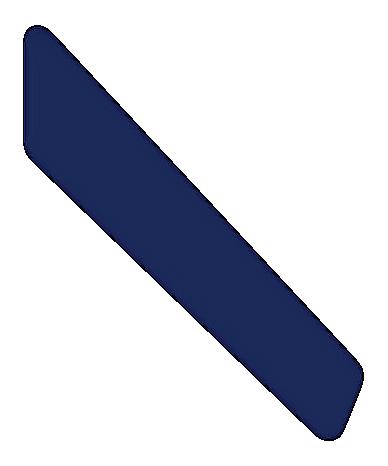


“As a business, I think if you’re not talking about the environment, not making even small changes, then you’re not really being responsible.”
Jess Bussell Horsfalls Optometrists
Ms Lisa Wymond, co-owner and national brands manager, says the company recognises that consumers are increasingly prioritising environmental responsibility, creating a growing demand for more sustainable eyewear.
But that didn’t need to be at the expense of quality or style.
“We want to empower individuals to make a positive impact on the planet while expressing their personal style,” she says.
The high end, sustainable eyewear category is still niche but growing, she says.
“Originally, bio-degradable acetate colour options were quite limited but as the segment grows, the colour offerings have grown with it.”
“Project Green has just released some beautiful new models that are in a wider variety of colours, which is exciting to see the possibilities in the luxury eco-friendly segment expand.”
Those releases will also come in a new eyewear case as the company looks to innovate further.
Currently made of reconstituted leather, it will soon be made of cork.
She says the sale of Project Green glasses and the partnership with One Tree Planted have resulted in more than 3,500 trees being planted globally, with more than 1,200 of those in the Amazon rainforest.
A year since launching, there had been a “great response” from stores around Australia.
“Practices have really embraced the range and are championing it and what it stands for to their patients,” says Wymond.
“They are seeing that patients are becoming much more environmentally-conscious and are actively looking for this alternative.
“ We’re seeing uptake in those practices that have their finger on the pulse and are in tune with their patient wants, needs and values. They are retaining patients who are looking for a more eco-friendly option, while also attracting new patients that appreciate what the practice stands for.”
Those customers tended to be “environmentally-conscious individuals who prioritised sustainability in their purchasing decisions”.
“They are likely to be socially aware and concerned about the impact of their consumption on the planet. This customer values high-quality products that last but also seeks eco-friendly alternatives.”
They also appreciated innovative design and a stylish aesthetic.
Wymond was also proud that Project Green had won the sustainability category at the ODMA Awards of Excellence 2023, which highlighted “Project Green’s outstanding commitment to sustainability within the eyewear industry”.
“The award underscores Project Green’s innovative approach to sustainable design, which incorporates eco-friendly materials like bio-acetates and compostable demo lenses.”
The New Standard in Visual Field Testing
Virtual Reality Visual Field device - incorporates complete Visual Field analysis.
Detailed progression analysis and the most versatile & efficient vision screening technology.
Latest technology provides the same reliability and reports as the “gold standard”.
Supplied complete with a Tablet PC –BlueTooth interface with the VF2000 NEO.
Compact/Space-saving/Portable - can be used anywhere, no need for a darkened room.





Active eye tracking –enhances reliability.
Full and Fast Thresholds VF Testing plus Neuro, Kinetic, Ptosis and Esterman tests


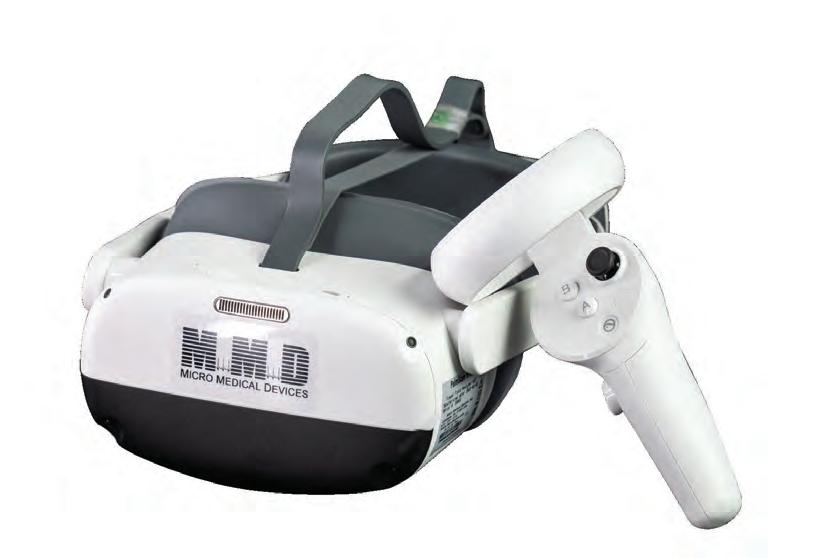
FDT Testing Stereopsis
Visual Acuity and Contrast Sensitivity
Colour Testing (Ishihara, D15 and Advanced Colour Tests)
Eye Mobility and Strabismus


The results are clear. NovaTears® demonstrates statistically significant and clinically meaningful improvements in the signs and symptoms of Dry Eye Disease associated with Meibomian Gland Dysfunction.
NovaTears® is a unique preservative-free non-emulsion eye lubricant utilising patented EyeSol® Technology:
NovaTears® acts as a lipid layer stabiliser & evaporative barrier for improved tear film stability & quality:
Stabilises & thickens outer tear film

Lubricates the surface of the eye, spreading quickly without blurring vision
Preservative, phosphate, water and surfactant free.
Allows replenishment of underlying water layer with natural tears.
months shelf life after opening
free
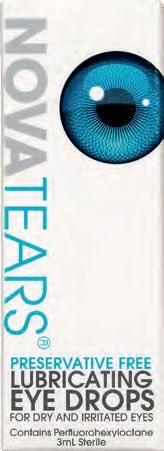
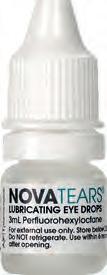
STREAMLINED AUTHORITY CODE 6172
PBS Information: Authority Required (STREAMLINED): Severe dry eye syndrome in patients who are sensitive to preservatives in multi-dose eye drops.
Reference 1. Tauber J, Berdy GJ, Wirta DL, Krösser S, Vittitow JL, on behalf of the GOBI Study Group, NOVO3 for Dry Eye Disease Associated with Meibomian Gland Dysfunction: Results of the Randomized Phase 3 GOBI Study, Ophthalmology (2023), dol: https://doi.org/10.1016/j.ophtha.2022.12.021.
NovaTears ® Eye Drops (Perfluorohexyloctane 100% v/v, 3mL) are for the lubrication and relief of dry and irritated eyes. Do not use NovaTears ® with contact lenses. If using any other eye medication, allow at least 15 minutes between using the other product and applying NovaTears ®. NovaTears ® should not be used in children under 18 years. NovaTears ® should not be used while pregnant or breastfeeding. AFT Pharmaceuticals Pty Ltd, Sydney. ABN 29105636413.


Pairing premium eyewear with premium service and support is at the heart of the global company’s strategy in Australia.
n just four years, Italian leading eyewear player Marcolin has established itself within the Australian optical market.
Renowned for its premium, high-end frames, the company has worked hard to pair its product offering with support and service for optometrists.
“You don’t sell in; you sell out. If the optometrist doesn’t sell the product, you don’t get a replenishment order. Success in sales comes from the replenishment, not the first order,” explains Mr Alessandro Marchi, general manager of Marcolin Australia.
This philosophy has been at the core of Marcolin’s business strategy since it opened its Sydney office, focusing on delivering both luxury eyewear and the tools necessary to help its customers thrive in a competitive industry environment.
Founded over six decades ago in Italy’s Veneto region, Marcolin’s portfolio features some of the most prestigious names in fashion, including Tom Ford, Pucci, Guess, Zegna, and Max Mara.
These brands have been introduced to the Australian and New Zealand markets, where Marcolin aims to cater to a broad demographic spectrum by offering an extensive selection of high-end products.
This broad offering was further expanded in 2023, when Marcolin acquired the German eyewear manufacturer ic! berlin GmbH, known for its innovative and stylish frames.
The company is also set to bring new collections from globally acclaimed brands, such as Christian Louboutin and Abercrombie & Fitch, to Australia in 2025.
However, Marcolin believes its success in Australia is not solely attributable to its impressive brand line-up.
The company has placed a strong emphasis on after-sales support and marketing, ensuring that its retail partners, ranging from independent optometrists to boutique stores and department chains, receive tailored solutions.
This includes in-store displays, digital marketing materials, and customised retail strategies designed to meet the unique needs of each business.


“At Marcolin, we believe exceptional service is integral to the long-term success of our retail partners,” says Marchi.
“We work closely with our clients, offering warranty services, customer care, and post-purchase support to give them and their customers the confidence to continue investing in our products.”
This dedication to service, combined with the company’s premium product offering, has strengthened Marcolin’s reputation as a reliable and professional partner in the luxury eyewear space.
According to Marchi, “when you sell premium brands, you must also provide premium service – the two are inseparable.”
As Australia’s optical market becomes increasingly competitive, he says Marcolin is well-positioned to continue its growth.
The company’s support for independent optometrists and local chains remains a central focus, with its combination of high-quality products and dedicated service offering a significant advantage.
Marcolin’s success in Australia is a testament to its strategic focus on brand excellence, comprehensive support, and customer engagement.
As it continues to introduce new brands and expand its reach, the company believes it is poised to play a leading role in shaping the future of the Australian luxury eyewear market.

Designed for forward-thinking, ambitious individuals of all ages and genders, MCM’s AW24 Eyewear collection embodies versatility at its core.
Representing the Zeitgeist of the collection is a frame that inherits the curves of the iconic Laurel logo and the bold, young spirit of the brand, updated with a refined design and undeniable charisma.
“Iconic elements from the brand’s prestigious heritage in the luggage sector, become details that underline the elegance and constructive rigor of the frames,” Marcolin says. “Metal pins and angular inserts, next to the reinterpretation of the distinctive logos of the brand, give these luxury frames a touch of spirit and lightness typical for the brand.”
S imple shapes inspired by Bauhaus are also “transported to a fresh sophisticated, modern aesthetic”.
MCM Eyewear has worked to redefine the theme of travel and digital nomad living the brand is known for. Designed and built around “the unconventional spirit, fluid personality, and dynamic attitude of a community of digital nomads, the collection’s styles travel through space and time”.
Email: customerservice.au@marcolin.com


Project Green, the award-winning luxury eco-friendly eyewear brand, has announced its latest product launch, featuring the new Alder model.
Designed as a bold, unisex frame, the company says Alder (Alder c4 pictured) combines high-end craftsmanship with sustainability, in line with the brand’s commitment to eco-conscious practices.
“Crafted from biodegradable acetates and featuring compostable demo lenses, Alder reflects Project Green’s ethos of blending style, quality, and environmental responsibility,” Eyes Right Optical says. With every frame sold, Project Green is continuing its initiative of planting a tree through the One Tree Planted program, making “a tangible impact on environmental conservation”.
Email: sales@eyesright.com.au
In 1996, ic! berlin disrupted the eyewear industry “with an unseen approach”: ultra-light metal frames with a patented screwless hinge created a sophisticated, yet unconventional look that became synonymous with Berlin’s creative scene. “ic! berlin frames guarantee weightless comfort thanks to their durable construction and the iconic use of cold-rolled stainless steel from Germany,” says Marcolin, which acquired and made ic! berlin a house brand in 2023.
“This dedication to ultimate comfort and quality extends to the use of other refined materials such as beta titanium from Japan, cotton-based acetate from Italy as well as the company’s latest innovation FLEXARBON.”
Every pair of ic! berlin glasses has been designed and handcrafted in the company’s Berlin manufactory. The new FW24 eyewear collection became available from 1 September 2024.
Email: customerservice.au@marcolin.com

ProDesign eyewear, popular among Australian independents through Eyes Right Optical, is celebrated for its clean lines, minimalistic style and intelligent construction. High comfort, durability and longevity are other qualities honed through decades of perfecting the design process, epitomising Danish craftmanship. PROFLEX (pictured) represents everything Danish design is about, the company says. Now also available with acetate fronts and matching temple tips, this concept aims to demonstrate ProDesign’s continuous attention to detail.

“From the carefully crafted, flexible temple development to the distinct three-dot feature, every aspect of PROFLEX reflects our commitment to crafting eyewear with a focus on both aesthetics and high functionality,” it says.
Email: sales@eyesright.com.au



"The idea is quite simple: inside a very organic shape – the faceted
The combination of bold design – and a newly developed material –in ic! berlin’s FLEXARBON collection marks a fresh era in eyewear manufacturing, Marcolin says.
Three years were spent working with scientists to develop the nowpatented carbon material inspired by aerospace technology that is “both feather-light and strong”.
The FLEXARBON frame features an exceptionally lightweight design, with the front section weighing 2 g, the company says. This is lighter than a standard sheet of paper, ensuring optimal weight distribution and comfort when worn.
The material used is also 0.7 mm thick and consists of eight layers of ultra-thin fibers. The superimposed textile meshes, which reportedly use the world’s best carbon fibers, have a high-quality matte surface on the outside and a high-gloss elegant pattern on the inside.
“Another defining characteristic of FLEXARBON is its flexibility, allowing the fronts to be adjusted across three angled positions using ic! berlin’s proprietary FLEX clips. This guarantees a customised fit for maximum wearing comfort no matter the activity.”
Email: customerservice.au@marcolin.com


ZEISS PhotoFusion X


Photochromic lenses perfected.
• Sunglass-level darkness outdoors
• Up to 2.5× faster to clear**
• Unique blue light and full UV protection – outside & indoors.

Mr Ethan Ong and Mr Ivan Au are businessmen. When they saw the opportunity to open an optometry practice in the Melbourne suburb of Footscray, they did the numbers. And they liked what they read.
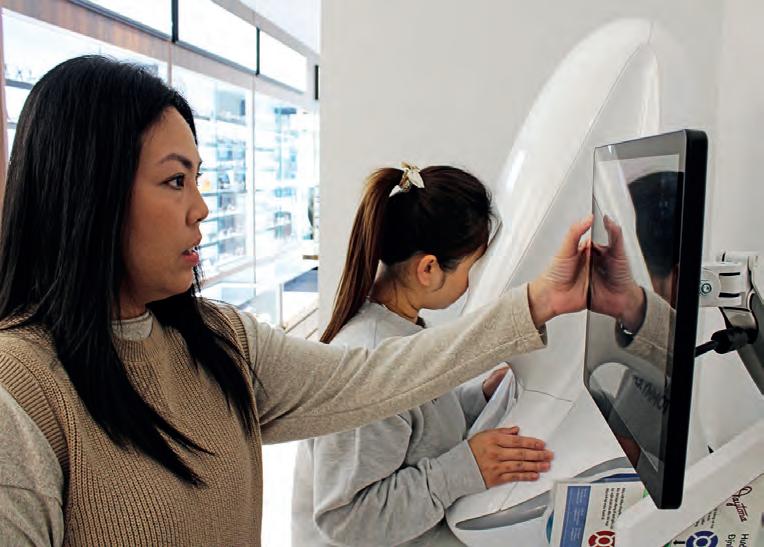
Also, Optos has recently expanded its technology, with up to 10 imaging modalities available across all its platforms, including the recent addition of optomap colour red, green blue laser (rgb), natural colour and blue fundus autofluorescence.
“While our backgrounds are rooted in finance rather than optometry, we recognised the significant potential within the optometry industry,” says Ong.
Attracted by high margins and a chance to work in a quasi fashion/ healthcare industry, they saw a growing demand for vision care and the potential for a strong recurring revenue stream.
“So when a prime location in the heart of the shopping street became available, it was an opportunity too tempting to ignore.”
That was almost 20 years ago.
Since then, the partners behind independent Eyemax Optical have become qualified optical dispensers to support the work of their two in-store optometrists.
And they have developed a passion for not only the numbers but also the duty of care that comes with managing a patient’s eyesight and the myriad conditions that can impact their vision.
The practice serves a diverse range of patients.
“Our optometrists do more than just prescribe glasses,” says Ong. “They care for patients ranging from young children needing myopia management to those requiring management for various eye conditions. Those conditions include glaucoma, cataracts, diabetic retinopathy, and age-related macular degeneration.”
The pair were wearing both their business and clinical lenses when they considered buying an Optos Daytona ultra-widefield retinal scanner to offer a better level of service for the patients.
“We trialled a couple of other machines,” says Ong, “but we found that the Optos was the most user-friendly, offering the most advanced software and capabilities.”
The Optos Daytona, like its sister devices Monaco and Silverstone, can capture approximately 82% of the retina, and its ultra-widefield imaging technology allows for a 200-degree scan that delivers a clear, more detailed image – known as an optomap – in less than half a second.
Because of this and other functions, Ong and Au were happy to invest in the machine, but they were further impressed by the purchasing options currently available.
“The Optos could be acquired without impacting our balance sheet, which was fantastic for us as it frees up capital for other investments that we believe will benefit our practice.”
At the time of writing, they’d had the machine barely three months but were already noticing a return on investment, for the business and their patients.
The Optos is a major upgrade on their previous fundus camera and comes with a great deal more quality and functionality.
That has allowed their optometrists to see the retina in greater depth, detail and breadth, meaning they are picking up issues with patients’ eye health that they might have missed before.
“Our optometrists are now able to detect pathologies that might have been missed with other equipment or scans, allowing them to document, record and identify the early onset of many conditions more effectively,” says Ong.
“The advanced software capabilities will also enable our optometrists to compare and overlay images, allowing them to track changes in a patient’s eyes over time more accurately.
“We’ve been able to pick up a few retinal tears that our other camera would not have because it doesn’t have that wide-angle view.”
Patients too have noticed the significant upgrade and have been willing to pay more for the scans.
“Once we explain the importance of the retinal image, what it can reveal, what conditions we can detect, and how we are able to document the changes in their eyes, the patients understand the benefits and are happy to pay for this service.”
And they are keen to tell friends and family as well, which is important in a competitive market where half-a-dozen other optometrists operate close to the Eyemax store.


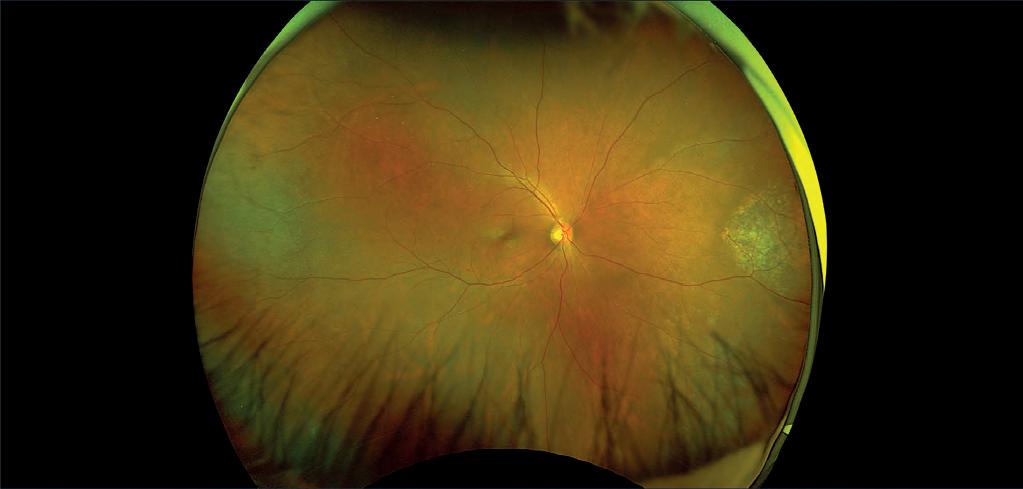
ABOVE L to R: Eyemax Optical's high-end showroom in Footscray; Staff at Eyemax Optical in Melbourne have appreciated the training and support they’ve received to get the most out of their Optos Daytona equipment; A retinal scan from the Optos Daytona. Its ultra-widefield imaging technology allows for a 200-degree scan showing approximately 82% of the retina.
Ong emphasises the importance of setting themselves apart from other practices.
“One of the key reasons we chose Optos was to differentiate ourselves by offering a more comprehensive service for our patients,” he says. “It’s a point of difference that has been a game-changer for our practice. It has greatly benefited our existing clientele, and we see significant growth potential in it.”
Rodenstock’s AI technology and data from over 500,000+ biometric eye scans, develops a detailed model of each eye. This personalized approach ensures sharper vision for your patients.
Part of that potential lies in forging stronger relationships with other healthcare professionals in the area.
“There are many avenues to explore,” he says. “For example, we can collaborate more closely with GPs and offer additional services, particularly in managing diabetic retinopathy, AMD and other eye-related issues.
"We’ve also been able to share scans with ophthalmologists and GPs, which has made the process of communication much easier for everyone involved.”
What has made integrating the Optos Daytona even smoother for Ong, Au and their team is the support provided by the company, which has an Australian subsidiary based in South Australia.
“Our experience with Anton, our representative, and the entire Optos team has been exceptional,” says Ong. “They handled the installation and provided in-depth training, which was outstanding. There’s also a dedicated helpline for ongoing support.
“As Optos only focuses on retinal imaging, I think what Optos has managed to do is to differentiate itself from other companies. Their focus on service and support is exceptional and their commitment to delivering the highest quality product shows.
“An example of their level of commitment is that software upgrades are provided for the life of the equipment.”
He recommends Optos to other optometry practices because “offering a better service to existing clients, capturing superior images, improving patient documentation, and detecting various pathologies and the early onset of diseases is crucial for delivering high-quality patient care and management in any practice”.
To those considering both the bottom line and the top-line health of their patients, it’s a "no-brainer”.

A/PROF SMITA AGARWAL is one of Australia’s first ophthalmic surgeons to experience NGENUITY 1.5, the latest update to Alcon’s 3D visualisation system. She talks to Insight about her initial impressions.
From the high of presenting at the 2024 European Society of Cataract and Refractive Surgeons Congress in Barcelona, Associate Professor Smita Agarwal carried that momentum upon returning to her private hospital in Wollongong.
To the naked eye, the surgical microscope at Victoria Street Private Hospital looked identical to the day she left for Europe, but at her first theatre list the following Monday she immediately understood why her Alcon rep, Ms Alana Parker, was so eager to get started.
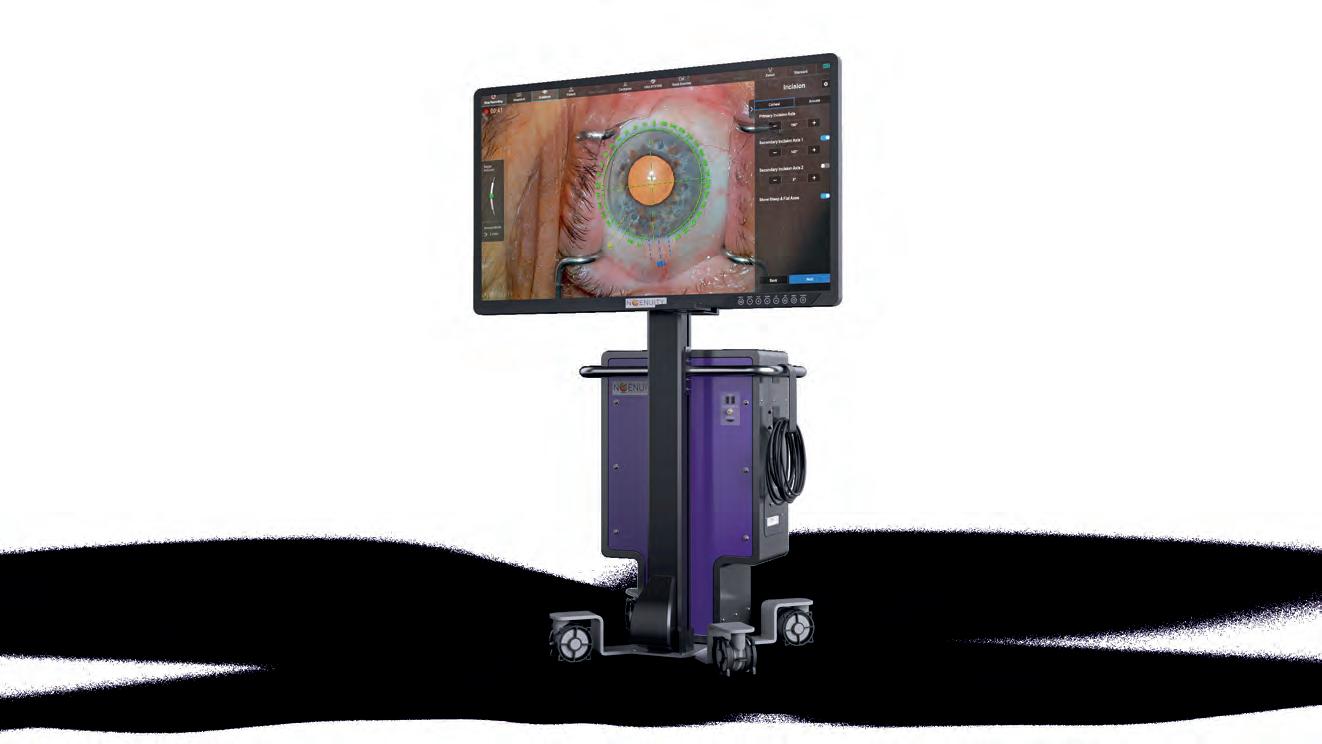
But after further refining her settings, she was becoming more comfortable, confident and content.
“Alana was more excited than I was because I had no idea what was coming,”
A/Prof Agarwal says.
“I was quite happy with the original settings we had put in place, working together to improvise the settings during the last three to four months, but then she started showing me some new filters that have been developed, and I was so impressed with the improvements in lighting, depth and resolution, particularly the clarity of the capsule.”
A/Prof Agarwal was operating with significant upgrades to the Alcon NGENUITY 3D Visualisation System. Dubbed NGENUITY 1.5, Alcon says the update is now commercially available in Australia and New Zealand and allows surgeons to optimise their surgical view with deeper visualisation using up to five times extended depth of field.1 Additionally, surgeons have the ability to see more with a 48% increased magnification, while also seeing more clearly with up to 42% increased depth resolution.1*†
It comes with new connectivity capabilities too, but the new enhancement modes – filters designed to help surgeons distinguish more detail – impressed A/Prof Agarwal the most during her first list with the system, with more features still to try.
Alcon’s NGENUITY 3D was first introduced to Australian surgeons in 2017 and has been improved through several upgrades. Technology like this is considered the future of ophthalmic surgery, offering new levels of comfort2,3 efficiency4-6 and teaching advantages7 in Australian operating theatres.
After first installing NGENUITY at Victoria Street Private Hospital, which she founded in 2023, the biggest adjustment has been switching from a traditional binocular microscope to operating on a heads-up display with 3D visualisation.
“After two or three long day lists during the week, by the end of the week your shoulders start hurting, so I thought it was such a brilliant innovation to be able to keep your head and back straight while operating,” she says. There was a learning curve to navigate, so A/Prof Agarwal continued to perform the majority of her surgeries on the traditional microscope. NGENUITY was used one list per month to familiarise herself; common with any new technology to maintain the rhythm of surgeries without delay. Hoping for improvements to the image quality, she kept NGENUITY for more straightforward cataract cases.
“And now with the new filters and other features with NGENUITY 1.5, the resolution is so much better. I think it’s now similar to using a traditional microscope, in my experience, and I expect it to soon become my default surgical microscope,” she says.
In her first session with NGENUITY 1.5, A/Prof Agarwal used the system on five out of the 10 patients on the list that day. All were cataract cases, but she expects the system to have tremendous value for pterygium and minimally invasive glaucoma surgeries (MIGS) too.
Three “enhancement features” have been introduced that improve the surgical experience, something she believes will improve precision8-10 and therefore minimise the risk of complications.
These include a Tissue Detail Mode** to visualise detail and depth “like never before* during the delicate steps of a procedure”, the manufacturer says.
But it was the Blue Boost Mode that A/Prof Agarwal used most in her first list with NGENUITY 1.5. It features edge detection to help improve the ability of identifying the capsule, compared to standard microscopes, for the toughest cases,11 Alcon states.
This is particularly useful for capsulorhexis and avoiding risk of posterior capsule breaks, A/Prof Agarwal says.
“I had a dense cataract and the rep asked if I’d like more capsule clarity, but I didn’t know what it was.
"Then she switched on the Capsule Clarity Mode, and the capsule was so clear. I asked her to switch it back to original mode, just to compare, and the difference was immediately clear. It was then further enhanced with Blue Boost Mode when I used VisionBlue.”
With several features designed to benefit anterior segment work, A/Prof Agarwal expects NGENUITY 1.5 to offer advantages in her pterygium surgeries with autoconjunctival grafts.
“The conjunctival blood vessels, my goodness, they’re are so well defined,” she adds.
“Any sort of limbal lesion or pterygium surgery, you’re able to see what you’re doing with much better clarity. Identification of conjunctival layers and removal of tenon’s layer helps to reduce its recurrence and promotes good cosmesis. A successful autoconjunctival graft should be transparent with no tenon’s layer, leaving the donor site to heal with minimal to no scarring, which is


really helpful with better visualisation using NGENUITY 1.5.”
A new MIGS Mode** will also be of interest to Australian surgeons, helping them benefit from up to 34% greater contrast.10
For A/Prof Agarwal, it’s likely to prompt a resumption of MIGS after tending to avoid the work as of late after a recent case of bleeding due to inaccurate positioning.
“It allows you to enhance the view of trabecular meshwork.10 Good visualisation for accurate positioning of the MIGS device is so important.”
But MIGS aren’t the only devices she expects to place into the eye’s small, delicate structures with more precision.
Like many Australian ophthalmologists, toric intraocular lenses (IOLs) comprise a lot of her work. But any small inaccuracy with the alignment can have big ramifications especially in patients with high astigmatism also seeking spectacle independence with a premium IOL.
“For every degree that the lens is off axis, there is 3.3% reduction in toric IOL power. The higher the power of toricity, the more significant is the effect. Manual marks can ‘blot out’ to about five degree marks. It means you’re not getting full correction, and it matters in high toric corrections, especially multifocal toric lenses,” she explains.
That’s why Alcon has made “seamless integration” with other surgical technologies a top priority, allowing for “image guided surgery” without the need for manual data input and transfer.
One of the big upgrades for NGENUITY 1.5 is its connectivity to the ARGOS Biometer with the VERION Image Guided System (Alcon), enabling surgeons and their teams to access key data through a centralised surgical view in the operating room.
It allows for an on-screen, real-time view of surgical parameters and system performance for greater information sharing during important surgical steps,
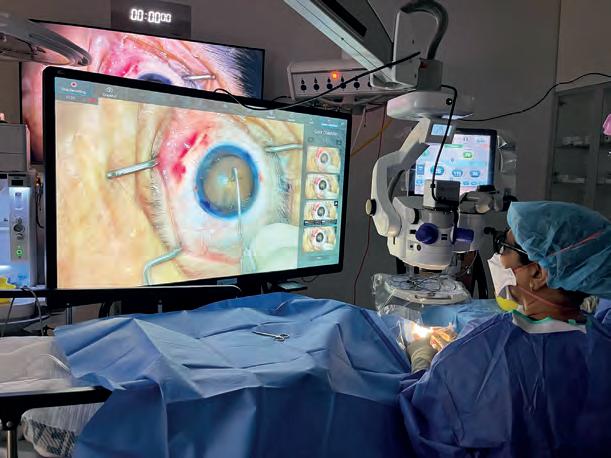

ultimately leading to improved patient outcomes and workflow efficiency,4-6, 12 the company stated.
To further streamline surgical planning, NGENUITY 1.5 increases the number of operating room devices it connects to, to also include Alcon Image Guided System, Version Reference Unit, CENTURION DATAFUSION, ORA VerifEye+ DATAFUSION and CONSTELLATION.
For Dr Agarwal, she will be connecting NGENUITY 1.5 with the existing VERION Image Guided System in her own hospital.
“This will allow us to seamlessly transfer the patient work-up data for toric IOL cases and show that on the NGENUITY screen, allowing me to place the lens accurately, increasing efficiency and better outcomes,” she says.
“With image guidance being embedded with NGENUITY 1.5 there is no need for DMM and MID, leaving fewer cables in theatre. Image guidance also reduces the risk of transcription errors and increases precision with reference images for incisions, rhexis, toric alignment and centration.”
In another notable feature, A/Prof Agarwal says with less light use, NGENUITY 1.5 offers less risk of phototoxicity and patients are finding it easier to co-operate thanks to no light sensitivity during the surgery.
Alcon made the NGENUITY 1.5 update commercially available in Australia and New Zealand in October 2024.
“Building on NGENUITY’s brilliant optics, ergonomics, safety, and seamless integration8,9 with existing surgical technologies, NGENUITY 1.5 now reinforces the company’s commitment to advancing next-generation workflow connectivity by integrating with the ARGOS Biometer with Image Guidance,”2,3,7,13-15 the company says.
Ms Penny Stewart, Alcon surgical franchise head and country manager for Australia and New Zealand, says the company continues to invest in the power of the Alcon Vision Suite – its comprehensive and connected equipment portfolio – to ensure surgeon needs are met.
“Across the industry, we continue to see surgical backlog and we’ve found that the more practices can automate repetitive tasks, the more efficient their systems can become,” she says.
“Technology such as NGENUITY 1.5 helps these surgeons leverage the benefits of connectivity to help improve their surgical workflows.”
Alcon says it has established itself as the 3D visualisation market leader in Australia and New Zealand, with the NGENUITY being used in both private and public facilities.16
The company says it will be providing customers with industry-leading customer service, training and support to ensure they have access to resources that will help make the transition to NGENUITY 1.5 seamless.17,18
NOTE: References are available upon request.
That’s right, you heard it first – Specsavers has been named Australia’s 6th Best Workplace by Great Place to Work®, the global authority on workplace culture. For the second year in a row we’ve topped the list of Australia’s best workplaces due to our inclusive culture, great people and commitment to making a difference in the lives of our customers
If you want to work for the best optometry / audiology / employer in the country talk to us today spectrum-anz.com/careers-at-specsavers/
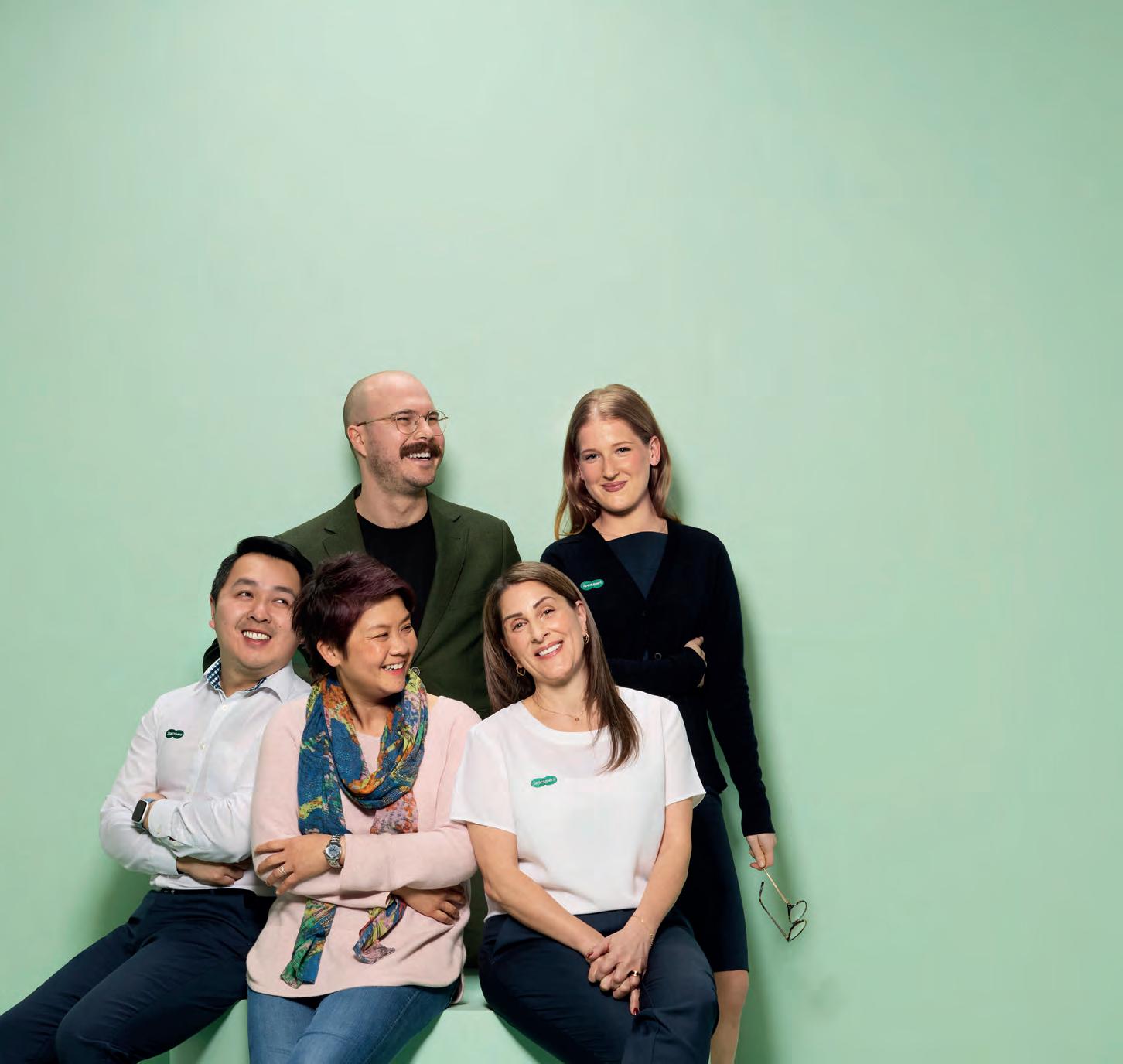


Hesitancy can set in for optometrists when presented with pregnant or breastfeeding patients due to concerns about potential risks. However, DR ALEX HUI says it’s essential to overcome this and seek out reliable information on best practices, especially with many medications lacking clear guidelines.
TABOUT THE AUTHOR:

OD, PhD, GradCertOcTher, FAAO Adjunct Associate Professor, School of Faculty of Medicine and Health, UNSW Sydney
here is often hesitancy in the therapeutic management of patients who are pregnant and/or lactating. This concern is understandable, considering the lifetime potential health and liability impacts should treatments cause harmful effects in the developing child.1
When considering use of agents during pregnancy, a teratogen is any substance which may cause a non-heritable birth defect in a developing foetus via a toxic effect.2 There are numerous known teratogens among pharmaceutical agents. For example, isotretinoin, a treatment for acne, is known to cause serious birth defects, including death, as well as miscarriage or premature birth.3 As such, not only is the use of this drug contraindicated for use while pregnant, but prescribing guidelines or recommendations in some jurisdictions often require use of two forms of birth control during use to ensure no pregnancy occurs.3
Alcohol is another well-known example of a teratogen, as heavy ingestion can lead to foetal alcohol syndrome, resulting in poor foetal growth, mental retardation and behavioural issues.4
While in the ideal scenario patients who are pregnant would not be utilising any medications, this is often unrealistic practically in most cases. About 60% of pregnant women will use a prescribed medication to manage an ongoing condition or condition induced by pregnancy itself.5 Further, 70% of patients who are lactating take some form of medication or supplement during this period.5
Unfortunately, while common, these patients are often relying on ‘off-label’ usage of these medications, as there is often little to no official information in the prescribing documents for how the drugs should be used in pregnant or lactating women.5 It is estimated that upwards of 90% of drugs on the market lack the appropriate information for how they should or should not be used while pregnant or lactating.5 This is a significant problem. In the literature, pregnant and lactating women, along with children, are often termed ‘therapeutic orphans’ as they are often excluded from clinical trials that investigate the safety and efficacy of drugs coming to the market.2
At the completion of this article, the reader should be able to improve their management of pregnant and/or breastfeeding patients, including:
• Understand the importance of shared decision-making in discussing risks with these patients
• Recognise the challenges posed by the lack of clinical trials involving pregnant and breastfeeding patients and how to approach ‘off-label’ drug use
• Recognise the limitations and gaps in drug safety information for pregnant and breastfeeding patients and how to mitigate risks in practice
• Be more familiar with the TGA’s categorisation system for drug safety during pregnancy
For the eyecare practitioner, hesitancy in managing conditions therapeutically during pregnancy and lactation is likely common. It stems not only from a lack of experience or exposure but is also because information regarding prescribing in this population is often unavailable from official documentation. Regardless, practitioners should familiarise themselves with the best practices in managing these patients as they can and will get diseases which need to be treated.
Recommendations to the entire industry are to include these patients as part of trials, to recognise that these are patients who will require treatments, and that pregnancy should not be seen as an inconvenience or complication in clinical trial and regulatory study design.2
In Australia, the Therapeutic Goods Administration (TGA) utilises a letter system to indicate the level of evidence to support or not support the use of a drug formulation during pregnancy. This ranges from Category A to Category X, with descriptors found in further detail in Table 1.

There was previously little information on the passage of drugs into breastmilk and the impact on infants.

The TGA explains that it considers pharmacological information in making the decision as to which category a drug formulation falls into. This can include pharmacokinetic information such as the dose, regimen and route of administration as well as pharmacodynamic information such as the potential mechanisms of action that the drug may have to act as a teratogen on a developing fetus.6
These decisions have numerous implications for what is and isn’t considered by the regulator when making the letter determination. For example, the category assigned is associated with the use of the drug formulation as intended, and so it does not consider things such as if they were used via a different route or in cases of overdose.6
It also does not take into account rare adverse reactions, or if there is occupational exposure to the formulation.6 This can be illustrated with the example of the aminoglycoside antibiotics tobramycin. This
CATEGORY TGA DESCRIPTION
drug is known to potentially cause ototoxicity and nephrotoxicity, so oral or intravenous preparations of this are pregnancy ‘Category D'.7 The ‘Category D’ classification indicates that there are known long-term impacts of using it while pregnant, but also reflects that even with this it is not absolutely contraindicated, as there may be instances where use of the drug to combat a susceptible infection may be warranted on balance of the risks and benefits. In contrast, ophthalmic formulations of tobramycin eye drops are pregnancy ‘Category B3’.8 This demonstrates how the formulation can impact the pregnancy categories. The active ingredient in the ocular formulation has not changed compared to the oral or intravenous preparation, and thus the inherent risk to the foetus if exposed has not changed. What is different is that the topical formulation, when used as intended on the eye, likely does not allow for significant levels to reach the developing foetus during pregnancy to exert their adverse effects. The TGA thus seeks to answer in making their category decision whether the drugs of interest, in the formulation of interest, reaches the developing foetus in significant enough quantities to be of concern, when making these pregnancy category decisions.
There has been criticism of the category and letter system used by the TGA and other regulatory agencies worldwide, as it inherently implies categories are more or less safe than others. However, the TGA explicitly states that the categories are not hierarchical. Rather, they merely reflect the amount of information which is known (or not known) when that formulation is used in pregnancy.6
Unfortunately, practitioners or patients often
A Drugs which have been taken by a large number of pregnant women and women of childbearing age without any proven increase in the frequency of malformations or other direct or indirect harmful effects on the foetus having been observed.
B1 Drugs which have been taken by only a limited number of pregnant women and women of childbearing age, without an increase in the frequency of malformation or other direct or indirect harmful effects on the human foetus having been observed.
Studies in animals have not shown evidence of an increased occurrence of foetal damage.
B2 Drugs which have been taken by only a limited number of pregnant women and women of childbearing age, without an increase in the frequency of malformation or other direct or indirect harmful effects on the human foetus having been observed.
Studies in animals are inadequate or may be lacking, but available data show no evidence of an increased occurrence of foetal damage.
B3 Drugs which have been taken by only a limited number of pregnant women and women of childbearing age, without an increase in the frequency of malformation or other direct or indirect harmful effects on the human foetus having been observed.
Studies in animals have shown evidence of an increased occurrence of foetal damage, the significance of which is considered uncertain in humans.
C Drugs which, owing to their pharmacological effects, have caused or may be suspected of causing, harmful effects on the human foetus or neonate without causing malformations. These effects may be reversible. Accompanying texts should be consulted for further details.
D Drugs which have caused, are suspected to have caused or may be expected to cause, an increased incidence of human foetal malformations or irreversible damage. These drugs may also have adverse pharmacological effects. Accompanying texts should be consulted for further details.
X Drugs which have such a high risk of causing permanent damage to the foetus that they should not be used in pregnancy or when there is a possibility of pregnancy.
Source: www.tga.gov.au/australian-categorisation-system-prescribing-medicines-pregnancy
erroneously will have the mindset to seek use of drugs in the A or B categories, as they are ‘safer’ than those in C or D, but this is explicitly not the intention of the classification system, and subcategories of B are merely based on animal rather than human data.6 It should also be understood that the category of the drug is in some ways influenced by the drug sponsor, who may apply for a more restrictive category than justified by the available data for legal or liability reasons.2
The Food and Drug Administration (FDA) in the US has undergone an overhaul of its pregnancy labelling system.9 They have removed the use of categories, and have replaced it with a narrative write up specified in the new ‘Pregnancy and Lactation Labelling Rule’ (PLLR) section.10 Sponsors for drugs are required to have specific sections detailing what is known or not known about a formulation if used during pregnancy, lactation and a new requirement for comments on use by males or females of reproductive potential.11
This requirement has had some positive impact. The availability of studies of the use of formulations in pregnant patients are becoming more common. Announced in 2015 with a five-year implementation period, all approved formulations from 2020 should follow this new label and information, with the intention that medicines approved before 2015 will be required to change their labels gradually.9 To date, no ophthalmic medication has received a new PLLR label.
Lactation presents a similar situation to pregnancy in that for many years there was little to no information on the passage of drugs into the breastmilk and in what quantities, and what impact this may have after ingestion by infants.12
To supplement the lack of official information from the product information sheets, resources such as the Australian Medicines Handbook (AMH) and LactMed by the National Institute of Health in the USA are often used by practitioners for information. LactMed will typically provide a summary of recommendations for the use of specific active ingredients and will also provide the supporting evidence as part of the write up.
In contrast, the AMH may have specific recommendations for not just active ingredients but also when they are in particular formulations such as eye drops versus systemic formulations and will helpfully also note if recommendations are based on large amounts of clinical experience and exposures.13 The AMH is also a strong go-to resource for the use of formulations in pregnancy. Statewide programs in Australia, such as the information service ‘Mothersafe’ from New South Wales can also be live resources for practitioners to discuss the safety of medications.14

Reliable resources with detailed information on drug safety, exposure risks and alternatives are essential for optometrists managing therapeutic care for pregnant or breastfeeding patients. By consulting these resources, optometrists can ensure they provide treatments that are both safe and effective for both mother and child during these critical periods.
‘MotherSafe’ (NSW)
• The MotherSafe service provides a comprehensive counselling service for women and their healthcare providers concerned about exposures during pregnancy and breastfeeding.
Australian Medicines Handbook (AMH)
• An independent, evidence-based, national drug reference, the Australian Medicines Handbook is a clinical resource for health practitioners concerned with the quality use of medicines. Updated annually, it includes comparative drug information which allows users to compare drugs and make informed prescribing choices.
LactMed by the National Institute of Health
• The LactMed database contains information on drugs and other chemicals to which breastfeeding mothers may be exposed. It includes information on the levels of such substances in breast milk and infant blood, and the possible adverse effects in the nursing infant. Suggested therapeutic alternatives to those drugs are provided, where appropriate. (LactMed is accessible and free of charge via the National Center for Biotechnology Information (NCBI).
While eyecare practitioners rightly should be concerned when using medications in patients who are pregnant or breastfeeding, understanding the information which may or not be available regarding the use of a formulation to treat ocular conditions is an important first step in being able to communicate the levels of risk to patients, so that a shared decision on the risk-to-benefit ratio can be made, with the hope of preserving the health and safety of both developing foetus, infants and mothers.
REFERENCES
1. C ron HT, Simm P, Said JM, Cheong JLY, Cranswick N, Hu YJ. Variation in clinical practice guideline recommendations for medication use in pregnancy in Australia: A systematic review. Aust N Z J Obstet Gynaecol. 2024;64(3):193-203.
2. J ackson H, Grzeskowiak L, Enticott J, Wise S, Callander E. How the structural determinants of health inequities impact access to prescription medication for pregnant women in Australia: a narrative review. The Lancet Regional Health – Western Pacific. 2024;42.
3. C rijns I, Mantel-Teeuwisse A, Bloemberg R, Pinas E, Straus S, de Jong-van den Berg L. Healthcare professional surveys to investigate the implementation of the isotretinoin Pregnancy Prevention Programme: a descriptive study. Expert Opinion on Drug Safety. 2013; 12 (1): 29-38.
4. S achdeva P, Patel BG, Patel BK. Drug use in pregnancy; a point to ponder! Indian J Pharm Sci. 2009; 71 (1): 1-7.
5. R en Z, Bremer AA, Pawlyk AC. Drug development research
in pregnant and lactating women. Am J Obstet Gynecol. 2021;225(1):33-42.
6. T herapeutic Goods Administration. Australian categorisation system for prescribing medicines in pregnancy 2011 [Available from: https://www.tga.gov.au/australian-categorisation-system-prescribing-medicines-pregnancy.
7. P fizer Australia Pty Ltd. DBL Tobramycin Injection (Tobramycin) 2022 [Available from: https://www.ebs.tga.gov.au/ebs/picmi/ picmirepository.nsf/pdf?OpenAgent&id=CP-2011-PI-03575-3.
8. A lcon Laboratories Inc. TOBREX (tobramycin ophthalmic solution) 0.3% 2012 [Available from: https://www.accessdata. fda.gov/drugsatfda_docs/label/2012/050541s024lbl.pdf.
9. H arris JB, Holmes AP, Eiland LS. The Influence of the Food and Drug Administration Pregnancy and Lactation Labeling Rule on Drug Information Resources. Ann Pharmacother. 2021;55(4):459-65.
10. N amazy J, Chambers C, Sahin L, Johnson T, Dinatale M, Lappin B, et al. Clinicians' Perspective of the New Pregnancy and Lactation Labeling Rule (PLLR): Results from an AAAAI/FDA Survey. J Allergy Clin Immunol Pract. 2020; 8 (6): 1947-52.
11. B rucker MC, King TL. The 2015 US Food and Drug Administration Pregnancy and Lactation Labeling Rule. J Midwifery Womens Health. 2017; 62 (3): 308-16.
12. A mir LH, Crawford SB, Cullinane M, Grzeskowiak LE. General practitioners' management of mastitis in breastfeeding women: a mixed method study in Australia. BMC Prim Care. 2024; 25 (1): 161.
13. P harmaceutical Society of Australia, Royal Australian College of General Practitioners, Australasian Society of Clinical Experimental Pharmacologists and Toxicologists. Australian medicines handbook 2018. AMH. Adelaide SA: Adelaide SA Australian Medicines Handbook; 2018.
14. L eung HY, Saini B, Ritchie HE. Medications and pregnancy: The role of community pharmacists - A descriptive study. PLoS One. 2018; 13 (5): e0195101.

NOTE: Insight readers can scan the QR code or visit insightnews.com.au/cpd/ to access a link to this article to include in their own CPD log book.








MINIMUM PRODUCT INFORMATION
Before prescribing, please review the full product information at www.aftpharm.com/prescription/vizo-pf-dorzolatim.
Indications:
Treatment of elevated intraocular pressure (IOP) in patients with ocular hypertension or open-angle glaucoma when concomitant therapy is appropriate.
Contraindications:
Reactive airway disease, bronchial asthma or a history of bronchial asthma, or severe chronic obstructive pulmonary disease; sinus bradycardia, sinoatrial block, second or third degree atrioventricular block, overt cardiac failure, cardiogenic shock; hypersensitivity to any component of this product.
Precautions:
Adverse reactions found with systemic administration of beta-blockers may occur with topical administration.
Cardio-respiratory reactions; vascular disorders should be treated with caution; masking of hypoglycemic symptoms in patients with diabetes mellitus; masking of thyrotoxicosis; surgical anesthesia; immunology and hypersensitivity, the dorzolamide component is a sulfonamide; concomitant therapy with carbonic anhydrase inhibitors; not been studied in patients with acute angle-closure glaucoma; choroidal detachment has been reported; increased potential for developing corneal oedema in patients with low endothelial cell counts; beta-adrenergic blockade has been reported to increase muscle weakness; patients should be advised to seek their physician’s advice if they develop an intercurrent ocular condition or any ocular reactions; Dorzolamide/timolol 2%/0.5% has not been studied in people wearing contact lenses; not been studied in patients with hepatic impairment; not been studied in patients with severe renal impairment (CrCl < 30 millilitre/min); for use in the elderly and paediatric use, see full Product Information (PI).

Pregnancy Category C, (see full PI). A decision should be made whether to discontinue nursing or to discontinue the drug, taking into account the importance of the drug to the mother.
Interactions with other medicines:
See Contraindications and full PI; specific drug interaction studies have not been performed with Vizo-PF Dorzolatim.
The potential exists for additive effects and production of hypotension and/or marked bradycardia with timolol maleate; disturbances have been reported with oral carbonic anhydrase inhibitors; mydriasis resulting from concomitant use of timolol maleate and adrenaline has been reported.
Adverse effects:
Most frequently reported adverse effects were: ocular burning and stinging, taste perversion, corneal erosion, conjunctival injection, blurred vision, tearing, and ocular itching; urolithiasis was reported rarely; others (see full PI).
May affect some patients’ ability to drive and/or operate machinery.
Dosage:
One drop in the affected eye(s) two times daily; when substituting for another ophthalmic antiglaucoma agent(s), discontinue the other agent(s) after proper dosing on one day, and start Vizo-PF Dorzolatim on the next day.
If another topical ophthalmic agent is being used, the other agent should be administered at least ten minutes apart; efficacy in paediatric patients has not been established (for more information regarding safety in paediatric patients ≥ 2 and < 6 years of age, see full PI).
To avoid contamination of the solution, keep the container tightly closed, do not let the dropper tip touch any surface.
Unopened bottle: Store below 25°C. Protect from heat. Opened bottle: Store below 25°C. Discard contents 4 weeks after opening the bottle. Protect from heat.
Paediatric optometrists are crucial in shaping children's visual development and well-being, yet discussions often focus on myopia. The recent ‘Paediatric Masterclass’ at the Australian College of Optometry broadened this perspective. Summarising this masterclass, in Part 1 DR EBRU EFEM offers strategies for managing the psychosocial impact of eye drops while in Part 2 ZEINAB FAKIH emphasises the clinical importance of cycloplegic refraction.
ABOUT THE AUTHORS:

While eye drops are fundamental in paediatric eyecare, their administration often presents challenges, particularly for young patients. However, with practise, optometrists can develop ways to navigate these difficulties, foster cooperation in the clinic and provide parents strategies to ease the process at home.
of the psychosocial impacts of eye drops instillation and find fewer distressing approaches to invasive examinations including eye drop instillation. In order to reduce stress for children when instilling eye drops, several helpful approaches can be adopted:
• Use of age-appropriate language to explain the procedure and the reason why the eye drop use is important. Understanding the purpose may help reduce fear and anxiety in children
• Demonstrating the technique of eye drop instillation on a toy to familiarise the child with the procedure
• Offering a reward such as stickers can help motivate the child to become more cooperative and be a method of distraction of fear

MPH GradCertUniversityTeaching Manager Paediatric and Rehabilitative Services Australian College of Optometry
Eye drops can be used to treat various eye conditions in children including allergies, infections and inflammation of the eyes. In addition, cycloplegic eye drops are a crucial part of paediatric eye assessments. For children under the age of 12 months, 0.5% cyclopentolate is used, and 1% cyclopentolate is used for those over the age of 12 months.1 The use of this medication in clinic results in blurry near vision due to cycloplegia and glare sensitivity that comes with pupil dilation. These symptoms can increase anxiety in children and reluctance to participate in the eye examination. Studies have shown that instillation of eye drops result in distress and negative clinician-patient relationship in at least 45% of children under the age of four years.2 In general, eye drop instillation can result in distress in many children which means poor cooperation and difficult examinations. There are a variety of reasons that may explain why eye drops are not favoured in the paediatric patient group. The burning physical sensation caused by the eye drops and the fundamental unfamiliarity of the instillation process are two of the often cited reasons.
At the completion of this article, the reader should be able to improve their management of paediatric patients, including:
• Understand the psychosocial impact of eye drops
• Prioritise stress-reducing, tailored approaches to accommodate children with autism spectrum disorder (ASD)
• Recognise the importance of cycloplegic refraction
In paediatric healthcare, use of restraint (also referred to as ‘clinical holding’ and ‘supportive holding’) is not uncommon.3 But restraint can negatively impact children by creating fear, anger, confusion and emotional stress. Additionally, there are long-term psychological consequences of restraint, including phobias, exacerbation of pain and a difficulty establishing relationships with healthcare professionals. So it’s vital that clinicians are aware
• Clinicians demonstrating calmness during the eye drop instillation process can increase trust and cooperation in children
• Working in step-by- step approach, and offering to review patient another day if the child is too anxious to continue with the examination
Several eye conditions require eye drop use over a period of time. In these circumstances, the parent or caregivers become the responsible ‘clinicians’ in a home setting to instil eye drops for their children. For this reason, it is crucial to address the challenges that the parents face when administering the eye drops at home. The distress associated with eye drop instillation is not only confined to the child but also can extend to generate negative emotions in parents and caregivers.4 Parents resort to techniques such as distraction, role-play and reward to minimise distress and anxiety when instilling eye drops for their children at home. Overall, parents show dislike to using force to overcome their child’s reluctance to have eye drops as this creates tension between the child and the caregiver.
In order to support parents with instilling eye drops at home, clinicians can share useful tips to make
• Hyperopia +2.00 or less
• May be asymptomatic especially in young children
• Normal visual acuities and stereo acuity expected
• Hyperopia + 2.25 to + 5.00 OS
• Can be bilateral or anisometropia
• Often symptomatic by school age
• Can be amblyogenic
• Can affect stereoacuity and BV
the procedure less distressing for both the child and the parents/caregivers. Often, step-by step demonstration of technique for eye drop instillation reduces risk of incomplete medication delivery. In addition, written instructions are always helpful for parents to refer back to as required.
Discussing the challenges that the parent/ caregivers may face during eye drop instillation provides reassurance and an opportunity to discuss ways to overcome these challenges. By doing so, parents feel more relaxed and supported by the clinician, resulting in better compliance. Regular follow-up on the progress can also increase trust and rapport between the clinician and the parent.
Autism spectrum disorder (ASD) is a neurodevelopmental disorder which results in social, communication and cognitive impairments. It is estimated that one in 40 people in Australia are diagnosed with ASD.5 Children with ASD often require a tailored approach during clinical examinations due to their sensory and communication challenges. Astigmatism, amblyopia and strabismus are common ocular conditions that present in children with ASD.6
Allowing the family to visit the practice prior to the examination may reduce stress and make the child with ASD feel more comfortable. It is also important to understand the needs of the patient. A discussion about their needs with parent/caregiver can help you, the patient and the parent/caregiver to better prepare for the examination.
An information sheet with pictures of equipment and step-by-step explanations of parts of the eye test can create familiarity and reduce overall anxiety. Dimming room lights, minimising loud noises and asking for assistance from family members where necessary can improve the overall experience. Direct communication with the child with ASD also helps build trust. Lastly, seeing the same clinician at each visit helps build rapport and reduce overall anxiety. Children with ASD tolerate invasive tests better when they are given clear explanations which enables them to feel like they have more control. This is imperative particularly when the clinician needs to touch the patient by holding eye lids open when instilling eye drops.7 It’s important to explore the
• Hyperopia > + 5.25 DS
• Can be bilateral or anisometropic
• Expected to be symptomatic by school age
• Amb(yogenic
• Can affect stereoacuity and BV
• Can result in bilateral amb(yopia
• Can have small scleral opening appearance of pseudopapillodema
needs of patient and create a safe approach when attempting to perform invasive techniques. Building a rapport with patients with ASD, communicating clearly and allowing for extra testing time can reduce distress, improve overall cooperation.
Cycloplegic refraction requires careful time management by the optometrist, consent from the parents, and may limit a child’s near acuity on the day of testing. However, these small challenges are significantly outweighed by the benefits of having a more accurate eye examination.
It is well documented that cycloplegia plays a critical role in the diagnosis and management of childhood refractive errors. A number of studies have reported the importance of cycloplegic refraction in school aged children.8,9
Cycloplegic refraction is considered the gold standard for refraction in young children. Without cycloplegia, there is increased risk of over-correcting myopia, under correcting hyperopia and reduced accuracy of astigmatic correction.
The published results of the Statewide Eyesight Preschooler Screening (StEPS) screening program through NSW found that uncorrected refractive error and amblyopia were still the most detected anomalies in school aged children detected through screening.10
In the case of amblyopia, the diagnosis requires the exclusion of ocular pathology as a cause of deprivation, and the confirmation of the most accurate refractive correction if refractive amblyopia is identified. These differentials are more accurately examined with cycloplegic agents.11
In Australia, the prevalence of hyperopia at age six is estimated at 13% and by age 12, the prevalence is estimated at 5%.12 In children with hyperopia the exploration of the latent hyperopic prescription is of critical importance. The manifest hyperopia at a child’s presentation is only a small component of their total refractive error. Total hyperopia is defined as the combination of manifest hyperopia and latent hyperopia.
Without exploration of the latent component a
correction for symptomatic hyperopia, refractive amblyopia and accommodative esotropia may be inefficient and prevent the child from realising their full visual potential.
The total hyperopia found can be defined as low, moderate or high as shown in Figure 2.
Not all hyperopic prescriptions require correction. Children with low-to-moderate hyperopia may be asymptomatic, have normal visual acuity, adequate binocular vision control and good stereoacuity. Moderate hyperopia is expected at birth, with most full-term infants seen to be mildly hyperopic.
Emmetropisation begins from early infancy with an increase in axial length and decrease in corneal curvature and lens power observed. The most rapid phase of this process occurs in the first year of life. By 12 months, infants with moderate-to-high residual hyperopia (greater than +3.50D) are up to 13 times more likely to develop strabismus by age four if left uncorrected.13
Prescription decisions should be based on evidence, specific to the child’s age, presentation and symptoms. The evidence is clear for presentations of strabismus, where the total hyperopic prescription should be prescribed in a child with a manifest accommodative esotropia.
In other presentations of hyperopia, clinical judgement can be made as to the required refractive correction. In making this decision, optometrists should consider the child’s symptoms, their visual needs at distance and near, their binocular vision including the presence of any significant phoria, risk of decompensating to a manifest tropia and risk of refractive amblyopia.
Furthermore, the effect of hyperopia on a child’s education continues to be an area of interest. A recent meta-analysis in 2022 looking at the impact of hyperopia on academic performance found that there is a statistically significant relationship with children having uncorrected hyperopia showing poorer educational performance than emmetropic children.14
When necessary, optical corrections for the hyperopic child should aim to reduce accommodative demand and to provide clear, comfortable vision and normal binocularity.15
NOTE: References are available in the online version of this article or upon request.


#Targets all layers of the tear film, suitable for evaporative, aqueous deficient & mixed dry eye TRIPLE ACTION TARGETS ALL LAYERS OF THE TEAR FILM1,2

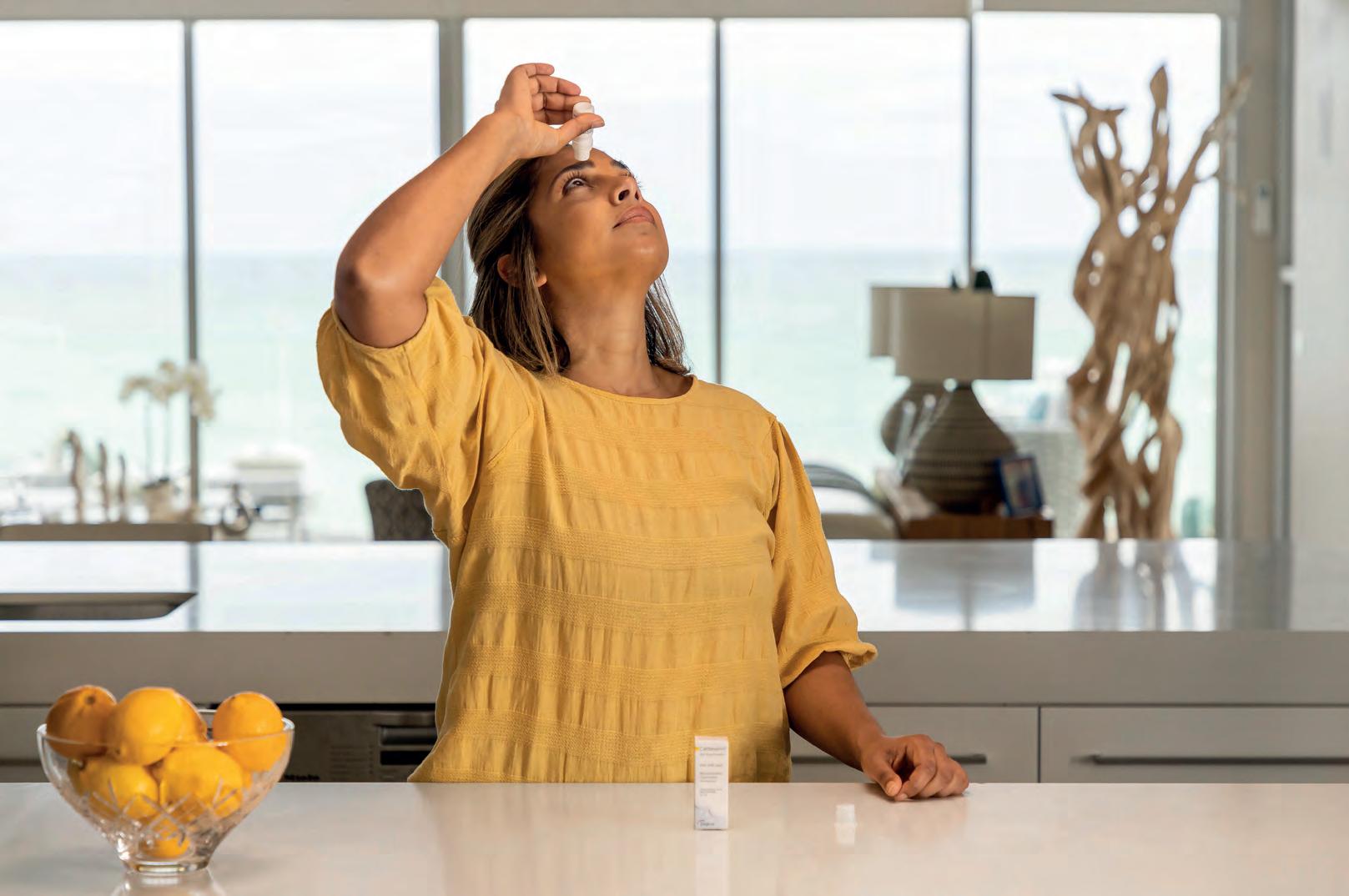

A contingent of Australian optical professionals traded the comfort of daily practice-life for the rugged terrain of remote Fijian villages where their dispensing skills were put to the test to change hundreds of lives.
Word of mouth can be a powerful marketing tool, especially in the Pacific islands, as a team of volunteer eyecare professionals found out during a recent outreach project in Fiji.
Twelve members of Optical Dispensers Australia (ODA) travelled to the island nation in July 2024, their suitcases filled with hundreds of donated pre-cut prescription glasses ranging from -6.00 to +6.00, dispensing and screening tools, frames and a range of uncut astigmatic lenses.
The 12 – Ms Lyn Simeon (NSW), Ms Linden McNeill (WA), Ms Allyson Caffell (WA), Ms Nicole Grasso (NSW), Mr Chedy Kalach (NSW), Mr Ryan Magart (VIC), Mr Luke Yong (VIC), Mr Jordan Dyce (TAS), Ms Gladys Mak (WA), Ms April Petrusma (NSW), Ms Rayleen Tamblyn (NSW) and Ms Emma Dyce (TAS) – spent the next four days visiting remote villages and schools to conduct eye tests and give glasses to those needing them.
They linked up with local liaison Mr Sylvester Prasad, a dispensing optician from Opticare – The Eye Centre Fiji, who himself received a Cert IV in Optical Dispensing from the Australasian College of Optical Dispensing (ACOD) in 2023.
So successful were they that the 10 optical dispensers and two optometrists tested more than four times the number of people they had expected to see.
Yong, who wrote a blog about the trip, said the team was supposed to screen about 300 people during its four days.
But that number was passed by the end of day two.
“The ODA Fiji Outreach Project screened approximately 1,300 people and dispensed 407 pairs of glasses,” he said.
“We ran out of pre-cut lenses in some prescriptions and our lens edger broke down, so lenses had to be hand-edged from their 75 mm blanks.”
The failure of one piece of equipment was just one challenge of many, in a country where approximately 40% of the population live below the poverty line.
“Many simply don’t have enough money for their daily essentials like food and electricity, let alone having to pay for eye tests and glasses,” said Yong.
“We realised that there was a real need for healthcare services in Fiji . . . and we were there to provide it – which is what we all signed up for in the first place.”
It meant the volunteers were popular wherever they went.
Days would start early, and often to the sounds of “crowing roosters and barking dogs”.
Two-hour trips in the team’s minivan would often follow, to remote parts of Fiji along the coast or into the island’s interior.
“Our first day took us to Rakiraki Methodist Mission School, a primary school . . . nestled on a hillside with ocean views,” said Yong.
“We were greeted at the school with the smiling faces of Year 1 and 2 primary school kids eager to have their first ever eye tests.”
Many of the children had never had eye tests before.
But the experience was a learning one for the team of volunteers as well.

“For many of the team, this would be our first experience with vision screening and though initially unnerving, our dispensing and in-store experience kicked in and we quickly settled in for the busy day ahead.”
They set up two testing rooms and stations for distance vision, reading vision and colour vision, with an optical dispenser assigned to each station.
If a vision problem was found, an optometrist would perform a refraction and then hand over to the dedicated dispensing room for frame selection and pre-cut glasses. In some cases that meant a cut and fit with an edger that Prasad, the team’s local liaison, had brought along.
Vision was largely very good among the children, but they did pick up multiple cases of hyperopia and astigmatism.
During another trip, to the town of Tavua and its district primary and secondary school, “unbeknownst to us, word of our clinic had quickly spread to the local villages”, said Yong.
“We came back from lunch to a thrall of locals young and old all lined up waiting to have their eyes tested.
“This was not part of the plan, but planned or not, we were ready to jump into action.”




That clinic resulted in 514 vision screenings and the dispensing of almost 200 pairs of glasses.
It would be a similar experience on day three, during the team’s visit to another village in the remote Tavua region.
“Remote and sheltered from outsiders, we travelled through dense bushland, over river crossings and dodged cattle whilst hoping that our vehicles would survive the bumpy off-roading.”
At Nadelei Catholic School they had one large classroom to set up the screening stations and a separate dispensing room.
A power outage meant they needed a village generator to operate the lens edger, frame heater and digital vertometer.
“While testing the kids, cars had been steadily arriving outside the school, some carrying elderly in wheelchairs and others having travelled hours from
other villages to visit our mobile clinic.”
That day finished with 210 vision screenings, 74 pairs of glasses dispensed and some fun time with the children, including football and dancing.
“We took advantage of the downtime and immersed ourselves in our surroundings, interacting with the kids and enjoying the contagious laughter that accompanied the running races, arm wrestles and dancing.”
The trip had thrown up many challenges, including one reluctant headmaster at the remote Naidiri Bay Khalsa School, who had to be convinced that correcting the vision of many of his 27 pupils was worth giving up one day’s education.
But Yong recalls that every “hiccup”, including a broken-down van and ute and dealing with ‘Fiji time’, only added to the adventure.
“We looked out for one another and banded together over our shared love of soy-lattes, 90s karaoke and, most importantly, our passion for optics and the privilege to provide a service to the less fortunate and make a difference.”
That effort was greatly appreciated by the people they visited and helped.
“We were humbled by the generosity and appreciation of the Fijian people,” Yong added.
“Team members were invited back to local homes for dinner (which we politely declined), hugs and handshakes were plentiful and the level of gratitude, kindness and hospitality shown made it more than worthwhile.
“The ODA team . . . arrived back in Australia with new friends, full hearts and memories to last a lifetime.”
And quite a number of much lighter suitcases
NOTE: ODA’s Fiji project was supported by Opticare – The Eye Centre Fiji, Christian Helps Fiji and ODA’s various Australian sponsors, including Hoya Lens Australia, CR Labs, Tokai Optical, Opticare, ProOptics, ZEISS, Hilco Vision, ACOD, Specsavers Launceston and Teachers Eyecare.

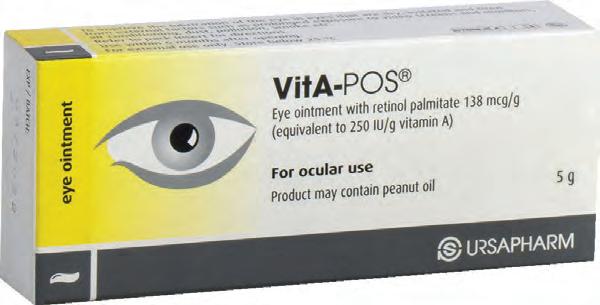


It’s not always immediately clear when someone with dementia enters the practice, but ELAINE GRISDALE and MARIANNE COLEMAN outline some potential scenarios and how to respond.


“THE MOST IMPORTANT THING ANY EYECARE PROFESSIONAL CAN DO IS LOOK BEYOND THE LABEL OF DEMENTIA, AND SEE THE PERSON.”
ollowing our previous article about dementia, part two answers some key questions for optical dispensers to enhance the quality-of-life of people living with dementia.
Knowing about a dementia diagnosis ahead of an eye appointment can be the exception, rather than the rule. This can hamper efforts of eyecare practitioners who want to deliver the best in patient-centred care.
Why might people with dementia or carers/supporters choose not to disclose a dementia diagnosis?
They may be unsure of the benefits of disclosure in the eyecare context, perhaps after experiencing stigma at other healthcare appointments. The person may not have a diagnosis yet, or may not have come to terms with it.
Whatever the reasoning, we have regular contact with our clients and are in a privileged position to support them, whether they have a diagnosis or not.
Some giveaways that a dementia diagnosis may be in the mix include having someone else making the appointment, mix-ups with appointments, or requests to change primary contact details for reminders and billing.
HELPFUL TIPS WHEN PEOPLE WITH DEMENTIA VISIT MY PRACTICE
Dementia does not affect everyone in the same way, so it can be difficult to know what to expect.
However, the most important thing any eyecare professional can do is look beyond the label of dementia, and see the person.
Respecting the personhood of a person living with dementia gives them purpose, status and value in society (Kitwood, 1998), and people with dementia wish to express their aesthetic preferences when choosing frames, so be sure to allow this. Many people with dementia can give consent (Shah et al., 2017), and where capacity may be in question, making decisions can still be a partnership between you, the person with dementia and their carer/supporter.
Some simple strategies can take an eyecare experience from good to great for people with dementia and their carers/supporters:
1 B e mindful that “we see with our brain”. Some types of dementia can affect visual processing, and an ordinary dispensary layout can become difficult to navigate for some people with dementia. (Crutch, Yong and Shakespeare, 2016).
2. Assume nothing. Some people with dementia may rise to the occasion of an eye test, or shopping for frames, and can seemingly navigate openings of conversation easily. Signs of dementia may only start to emerge as the conversation progresses. Similarly, assume nothing about the glasses they may have brought along.

3. Think about your environment. Noisy or distracting environments can trigger behaviours such as agitation or anxiety, especially if a person is also experiencing hearing loss. Can you turn off background music? Is there somewhere quieter to wait for the appointment, or to have frames fitted? Having items to fiddle with (even a lens cloth to fold), or something soft to touch, such as a stuffed toy or blanket, can help with anxiety and agitation. e patient and flexible; appointments can always be continued another time. ommunicate clearly, and focus on the person with dementia first and foremost, involving their carer/ supporter where needed. ncourage a partnership. Smile,
introduce yourself and keep the patient informed of what you are doing. A lanyard with your name, photo and role is useful.
1. B eware the “tyranny of choice” – some people may find the array of options on offer at a frame bar off-putting or even distressing. Ask the right questions regarding preferences, then bring over up to three frames to try at a time.
2. S patial vision changes in some types of dementia can cause issues with glare or reflections, which may be helped by suitable lens coatings. Be able to justify any recommendations you make.
3. People with dementia can be at increased risk of falling (Allan et al., 2009). Wearing inappropriate or badly fitting spectacles can increase falls risk for spectacle wearers (Elliott, 2023). Single vision spectacles can be a safer option when outdoors, but avoid change for change’s sake if the person is using their existing glasses appropriately.
4. S pare pairs, brightly coloured cases and glasses chains can help reduce loss and address perception problems. There are many helpful resources eyecare professionals can turn to, to learn about dementia care in Australia.
For starters, there’s the ODA Dementia-friendly dispensing webinar – available from the Optical Dispensers Australia webinar library.
'Understanding Dementia' is also a free online course from the University of Tasmania. Also, check out Dementia Australia’s dedicated guide about dementia and eye health, which includes an information sheet about eye tests for people with dementia and carers, and a tip sheet for eyecare professionals.
NOTE: References available upon request and in the online version of this article.






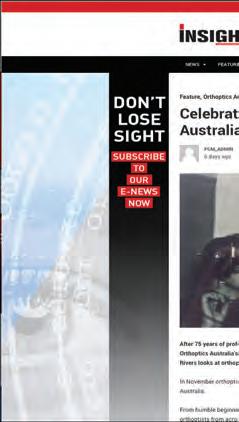
































Orthoptics Australia president A/PROF AMANDA FRENCH discusses the organisation’s response to a recent review into barriers within the national health workforce.
The Unleashing the Potential of Our Health Workforce: Scope of Practice Review taskforce led by Professor Mark Cormack recently released their final report based on extensive consultation across the sector. Orthoptists, as allied health professionals within eyecare, were a key stakeholder in the review, which aimed to identify barriers that prevent the health workforce from working to full scope of practice.
AN EFFECTIVE AND EFFICIENT EYECARE SECTOR IN AUSTRALIA IS CLEAR."
Orthoptics Australia has strongly advocated for the orthoptic profession, which overwhelmingly reported that it is often not enabled to work to full scope, throughout each round of consultation. The under-utilisation of the orthoptic workforce is a significant issue in the context of an eyecare sector under pressure, with increasing rates of myopia in the paediatric population, an ageing population and an increasing prevalence of chronic diseases.
Orthoptics Australia commends the review taskforce and welcomes the 14 recommendations that, if adopted and appropriately funded by the Federal Government in the 2025 Budget, will have the potential to make much-needed change across the healthcare sector.
Orthoptics Australia was supportive of the proposed development of a National Skills and Capability Framework and Matrix to clarify the skills and
the lack of understanding of scope of practice.
However, it noted that it is critical the matrix accurately reflects the scope of practice of all professions to ensure equity and effectiveness for workforce planning and development.
The review highlighted that the National Registration and Accreditation Scheme (NRAS) has created unintended disparity in legislation, access to funding and other programs, and has restricted the scope of practice for self-regulated professions outside of the scheme.
To address this, the report recommends removing references to the National Law from legislation that is unrelated to the regulation of health professionals. It also calls for the harmonisation of legislation where there is significant variation between states and territories, particularly in relation to drugs and poisons legislation.
Orthoptics Australia’s submission highlighted that inconsistencies in this legislation pose a barrier to orthoptists working to their full scope, with administration of Schedule 4 (S4) medications being a routine part of orthoptic practice.
The review also recommended reform to increase recognition of self-regulated professions, address unnecessary restriction of scope of practice and strengthen regulation.

Orthoptics Australia is supportive of a model of regulation that creates equity across all allied health professions and provides appropriate protection of public safety.
The Review of Complexity of the National Registration and Accreditation Scheme will explore this further by considering the parameters around inclusion of health professions in the NRAS and approaches to extend regulation to self-regulated and unregulated professions. Orthoptics Australia will actively engage with this review, with the view that orthoptists should be considered for inclusion in the scheme.
A further recommendation of the
review was for extension of specialist referral pathways within the Medicare Benefits Schedule (MBS) rules to include referral from allied health professionals where appropriate to their scope of practice. Extending these pathways would support continuity of care and reduce the need for attendance to a general practitioner for a specialist referral to be eligible for MBS funding.
Orthoptics Australia strongly advocated for orthoptist referral to an ophthalmologist to be included in these new pathways to enhance already well-established and effective models of collaborative care between orthoptists and ophthalmologists. This would be particularly beneficial in the context of preschool vision screening programs, and screening, monitoring and management of other ocular conditions within primary care and community health settings.
Orthoptist referral to other medical specialists such as neurologists and paediatricians could also greatly benefit patient care if implemented in future. The potential for orthoptists to significantly contribute to an effective and efficient eyecare sector in Australia is clear.
By removing regulatory and operational barriers, orthoptists can more readily work to the top of their scope of practice to deliver accessible and high-quality eyecare, including for under-served populations.
Orthoptics Australia is hopeful that the implementation of the Scope of Practice Review recommendations will lead to meaningful change, not just for the profession, but for the millions of Australians in need of better eye health services.
ABOUT THE AUTHOR: Associate Professor Amanda French is the president of Orthoptics Australia and Head of Orthoptics at the University of Technology Sydney.
AUSTRALIA is the national peak body representing orthoptists in Australia. OA’s Vision is to support orthoptists to provide excellence and equity in eye health care. Visit: orthoptics.org.au
Having a structured approach to the employee lifecycle can set clear expectations and drive staff performance, writes KAREN COUCH in her final article for Insight.
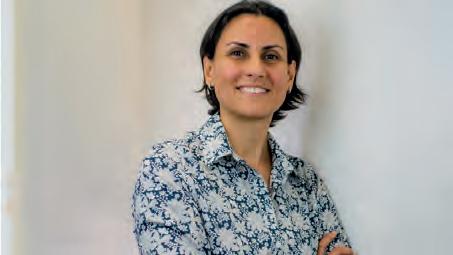
I“APPRAISALS CAN PROVE TO BE AN EXCELLENT RELATIONSHIP BUILDING EXERCISE BETWEEN EMPLOYERS AND EMPLOYEES.”
n Part 1 of this article, we identified the cornerstones before a practice can succeed, covering policies and procedures, workplace health and safety and selectively recruiting staff.
With the practice now ready for the public, this article delves into managing the employee lifecycle and, importantly, their performance.
Induction and training are the first vital components to consider.
An effective induction program ensures thorough staff introductions.
New employees should confirm their familiarisation with their new colleagues, as well as practice policies and procedures (including OH&S), technology, premises layout and location of manuals.
Reference to documents and supervisory staff should also be encouraged. Organisational structures and reporting lines need to be clarified, including roles of other employee groups.
As a practice’s primary resource, staff must be trained sufficiently to ensure the practice continues to run with efficiency.
Training is also essential for risk management purposes. Exposure for mistakes usually fall back on employers, known as vicarious liability. Employees must be trained in practice procedures, including situations infrequently experienced, for example violent patients.
A host of formal arrangements define roles and form the basis of dispute resolution.
Industrial Award – this establishes levels of salary and conditions of employment for workers in a specified industry.
Australian Workplace Agreement (AWA) – offered by an employer that may overrule working conditions of Industrial Awards or Enterprise Agreements.
Enterprise Agreement – negotiated deal between employer and employees or their union representatives about conditions of engagement.
Contract of Service – also known as Contract of Employment, employers control employees’ work duties and will generally be vicariously liable for their omissions. Employees are entitled to annual leave, sick leave, holiday pay, superannuation and workers compensation.
The Fair Work Act requires employers to ensure conditions include prescribed minimum standards also known as National Employment Standards.
BELOW: As a practice’s most valued asset, staff need training to ensure the business runs effectively.
Staff should also be encouraged to attend seminars and conferences to keep abreast of developments and network with colleagues.
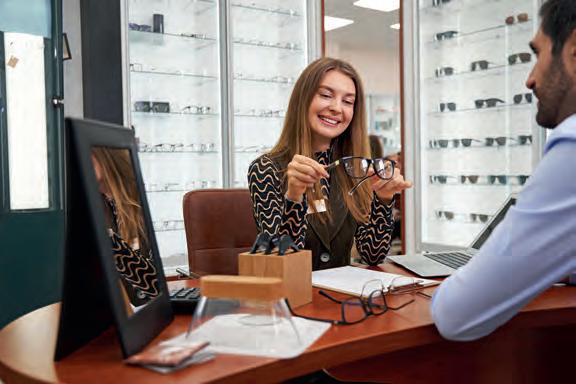
It is necessary to undertake staff appraisals for several reasons, including annual remuneration reviews, performance bonuses, communication and relationship building opportunities, and to demonstrate genuine interest by discussing development opportunities. Appraisals should address:
• Performance from the past six to 12 months: Quality of work, affording employees an opportunity to discuss their own performances
• D evelopment opportunities for the upcoming six to 12 months: To enhance contributions, forming a basis for the following year’s performance review. Appraisals can prove to be an excellent relationship building exercise between employers and employees, and is evidence of the employer’s respect for their staff’s opinions.
They’re also a useful performance management tool. It’s an opportunity to say "well done, thank you for good work" while allowing for constructive
performance improvement discussions. Similarly, it demonstrates the employer’s willingness to invest in the growth and development of their team.
Effective appraisal programs have some key ingredients: they’re continuous and consistent, constructive and interactive, compare performance to targets (KPIs) and reflect practice policies such as attendance, punctuality, business values, interpersonal skills and teamwork. They also need to motivate staff, identify training needs and welcome feedback.
Having clear and measurable objectives are vital for staff performance. It helps them to understand the scope and expectations of their role.
Otherwise known as KPIs, these qualitative and quantitative measures should be; business-oriented and linked to overarching goals and strategies; achievable noting that not all targets are 100% achievable; and specific with measurement criteria and timeframes. Some targets may be occasionally reviewed and ‘stretch targets’, if set, reflect performance excellence and achievement which may be rewarded through a bonus or promotion.
Collaborative Performance Indicators (CoPIs) encourage innovation through teamwork.
And now dear readers, after more than two decades writing this column, it is time for me to say goodbye and give someone else a chance to impart their knowledge and experience.
I trust my articles have been informative and relevant to your practice business efforts. Future plans for HPC look bright and we shall continue to be here for any of you requiring assistance. Please don’t hesitate to reach out. Until then, I wish you the best of health and happiness.
ABOUT THE AUTHOR: Karen Crouch is managing director of Health Practice Creations Group, a company that assists with set ups, administrative, business, legal and financial management of practices. Contact Karen her via kcrouch@hpcnsw.com.au or visit www.hpcgroup.com.au.

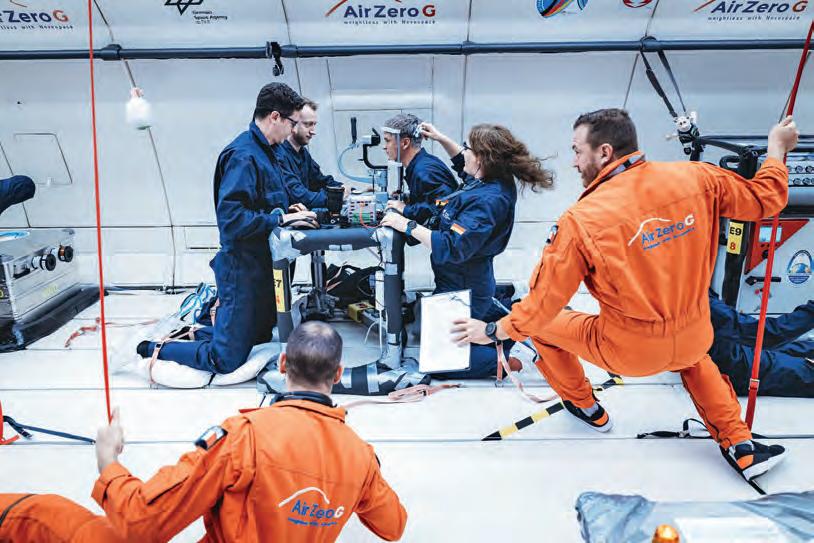
from how the eye acts in microgravity can inform how we diagnose and treat diseases back on Earth.
Astronauts can experience changes to their eyes and vision during spaceflight, a phenomenon coined Spaceflight Associated Neuro-Ocular Syndrome (SANS). Microgravity causes a person’s blood and cerebrospinal fluid to shift toward the head and, as a result, visual and anatomical changes have been reported such as optic disc edema, globe flattening, choroidal folds and hyperopic shifts.
Our research is focused on the anterior segment of the eye – the first to investigate dry eye disease (DED) and the tear film in space-like conditions. We achieve this by undertaking parabolic flights that create short periods of microgravity through precise flight patterns, as a precursor to orbit-based research.
DED is a significant ocular issue thought to affect about 15% of the population, with a higher prevalence in women and older people. But it’s also related to daily activities such as eye strain from computer use and sleep behaviour. Astronauts are particularly afflicted, with about 30% experiencing symptoms during long-term space missions.
The zero-gravity environment and the dry, enclosed cabin atmosphere are likely the biggest contributors to DED developing in space. Several other factors are likely involved, including tear film instability and ocular surface inflammation. Additionally, the space environment exposes the eyes to floating dust, artificial lighting, and prolonged screen use, which present further risk of ocular surface damage. Fluid shifts within zero gravity cause eyelid swelling and disrupted tear drainage, likely leading to tear retention and the buildup of irritants.
Our group is being led by Dr Timon Ax, MD, a PhD student at Western Sydney University. Professor Jennifer Craig, a prominent research optometrist in the Department of Ophthalmology at the University of Auckland, is also part of the team.
We believe understanding DED in space will help protect astronauts’ eye health but, importantly, offer insights into the mechanisms of DED on Earth. Next, the question becomes: could this lead to innovative diagnostic and therapeutic solutions for DED? We think so. A microgravity environment isn’t conducive to many current therapies: imagine trying to use an eye drop in space? But in all seriousness, there’s potential for portable, miniaturised and non-invasive technology to be used by astronauts before being repurposed for Earthlings.
The possibilities include diagnostic technologies such as infrared imaging to assess the tear film in real-time, or therapeutic devices such as ocular neurostimulators that stimulate tear production and alleviate DED symptoms at the push of a button. These advancements have significant implications for improving eyecare on Earth, particularly in remote or resource-limited settings such as rural areas, as well as in space. The study team comprises medical doctors, researchers, and engineers in collaboration with the German Aerospace Center (DLR) and Novespace in France.
We’re operating at the nexus of space medicine, ophthalmology and engineering. This interdisciplinary collaboration is essential for advancing our understanding of DED in space and developing effective interventions. We have future research planned that will focus on other eye conditions to contribute to the overall improvement of ocular health in space and on Earth.
Name: Dr Francesc March de Ribot
Qualifications (in abbreviations): MD, PhD,
Affiliations: University of Otago, Eye department, Department of Medicine
Location: Dunedin
Years in industry: 17
THERE’S POTENTIAL FOR PORTABLE, MINIATURISED AND NON-INVASIVE TECHNOLOGY TO BE USED BY ASTRONAUTS BEFORE BEING REPURPOSED FOR EARTHLINGS.

To list an event in our calendar email: myles.hume@primecreative.com.au

ANZGS CONGRESS
RANZCO CONGRESS 2024
Adelaide, Australia
1 – 4 November ranzco2024.com
ORTHOPTICS AUSTRALIA CONFERENCE
Adelaide, Australia
2 – 4 November orthoptics.org.au
ASIA-PACIFIC VITREO-RETINA SOCIETY CONGRESS
Singapore 22 – 24 November 2023.apvrs.org
SILMO ISTANBUL
Istanbul, Turkey
23 – 24 November silmoistanbul.com
INTERNATIONAL SOCIETY OF OCULAR ONCOLOGY
Goa, India
3 – 7 December isoo2024.com
MIDO EYEWEAR SHOW
Milan, Italy
8 – 10 February mido.com
Perth, Australia 14 – 16 February anzgsconference.com
100% OPTICAL
London, UK 1 – 3 March 100percentoptical.com
ODA INTERNATIONAL CONFERENCE
Sydney, Australia 7 – 8 March odamembers.com.au
ASIA-PACIFIC ACADEMY OF OPHTHALMOLOGY CONGRESS
New Delhi, India 3 – 6 April 2025.apaophth.org
ODMA FAIR
Sydney, Australia 27 – 29 June odma.com.au

About eight months into my psychology degree, I was feeling unsatisfied and wondered if I had made the right choice so I decided to attend UNSW’s Open Day to see what other options were available. At the time, I was thinking of steering away from health sciences so it was luck – or fate – that I walked into an optometry information session during that open day in 2013. The speaker was so inspiring about the different career avenues available within optometry, that I was sold and put it as my first preference. I remember the day my acceptance came out – my sister and I played Happy by Pharell Williams and had a dance party.
HOW DID YOU COME TO WORK AT SPECSAVERS?

Name: Acyel Al-Alosi
Current position: Clinical Performance Consultant NSW/ACT
Location: NSW
Years within the business: 8
I started in 2016 as part of the casual optical assistants team that helped open Specsavers Sydney Central – our flagship store in Sydney CBD. What attracted me was the opportunities for students including continuous development and optics training. Working in Sydney Central was a turning point in my professional career as I met my life-long mentors, learned more about optometry and how to operate a successful business. As I continued working with Specsavers, the vision of providing affordable and accessible eyecare is what made me decide to pursue a career within the business after university.
WHAT WAS YOUR FIRST ROLE WITHIN THE BUSINESS?
An optical assistant. I was responsible for all parts of the customer journey including pre-screening, helping patients select frames and dispensing.
WHAT GROWTH OPPORTUNITIES HAVE PRESENTED THEMSELVES?
Working for Specsavers has helped open the door to many opportunities. After working in Sydney CBD, I started
my graduate program in Specsavers Shellharbour and Warilla. There, I was mentored by several optometrists who had years of experience and different specialities. Through the support of my store partners, I could pursue further education and development in dry eye, paediatrics and contact lenses. My store partners were supportive in helping me seek opportunities both in and out of work such as running a virtual case study session for Fred Hollows, submitting an article for a trade publication and running Indigenous outreach clinics. Another growth opportunity was the Pathway Program. It’s an internal Specsavers program that supports senior retail and optometry professionals who are aspiring business owners, acting as a stepping stone to future joint-venture-partnership. By completing this, I developed a better understanding of how to be a great leader and business owner.
WHAT ARE YOUR TOP CAREER HIGHLIGHTS SINCE JOINING SPECSAVERS?
There are so many I could rattle off. My most recent was joining the Clinical Services team and Dr Ben Ashby, the clinical services director for Specsavers ANZ, to present remote care at a Vision 2020 Australia event at Parliament House in Canberra. It was a fantastic opportunity to speak to Australian senators and MPs about the importance of accessible eyecare in Australia. However, my top highlight has to be appearing on WIN News to speak about the importance of paediatric eyecare. It was scary and nerve-wracking, but awesome.
WHAT EXCITES YOU MOST ABOUT TURNING UP FOR WORK EACH DAY?
In my role, I support a wide network of optometrists and business owners. It is exciting every day to be able to support the development of these optometrists, the growth of a local business owner and at the same time, ensure patients across NSW/ACT are getting exceptional care.
Optometrist Joint Venture Partnership Opportunity – Darwin North, NT
Specsavers has a rare opportunity for an experienced Optometrist looking to take the next step in their career by becoming a Joint Venture Partner within our well-established Darwin North store. From incredible sunset cruises and crocodile encounters to Asian food markets and open-air movies, Darwin has it all. Specsavers Darwin North is conveniently located within Hibiscus Shoppingtown, a premier shopping destination in the area. The store itself is 101 sqm in size with 2 Optical test rooms, 5 dispense desks, over 1100 frames on display, and state of the art equipment including OCT.
In a few short years, Specsavers has achieved market leadership in Australia and New Zealand with more people choosing to have their eyes tested and buy their prescription eyewear from Specsavers than any other optometrist. To learn more about these roles, or to put your hand up for other roles as they emerge, please contact us today:
Joint Venture Partnership opportunities enquiries: Carly Parkinson on +61 (0) 478 201 057 or E carly.parkinson@specsavers.com
Optometrist employment enquiries: Specsavers Recruitment Services anz.srsdepartment@specsavers.com
Locum employment enquiries: ANZ.locumteam@specsavers.com
Graduate employment enquiries: apac.graduateteam@specsavers.com
Designate Partnership in Townsville with potential to earn in excess of $200K! Specsavers Townsville Castletown has an exciting opportunity for an experienced Optometrist to join the store on a 2-year Designate Partner program – No upfront cost and opportunity to try partnership before committing long term. Specsavers Townsville Castletown boasts a generous 210sqm with 4 Optical test rooms, a dedicated Audiology room, 7 dispense points, over 1000 frames on display, a varied patient demographic, and a welcoming team with strong family and community values.
Full-Time Optometrist Opportunity – Specsavers Cannonvale, QLD Specsavers Cannonvale is hiring an Optometrist to join their experienced team. The role offers a generous salary of $130,000 + super, state-of-the-art technology, and a community focused practice. Enjoy a supportive team culture, career development opportunities, and flexible full-time or part-time options in the beautiful suburb of Airlie Beach. Enjoy practicing full-scope optometry and access to ongoing professional development. This is a fantastic opportunity to advance your career in a dynamic and supportive environment!
Optometry opportunities at Specsavers! Are you seeking a job that offers more? Don’t miss the chance to join our team, where we provide competitive salary packages, cutting-edge technology - including OCT in every store – at no extra charge to your patients, supportive and collaborative teams and fantastic access to career development, including the opportunity to own your own business through our industry-leading pathway program. Whether you are looking for full-time, part-time, or fixed-term opportunities to complement your locum commitments or seamlessly integrate work with your family life, Specsavers has the perfect role for you.
Graduate Opportunities
Still deciding on where to start your optometry career? Specsavers have opportunities available throughout regional Australia and New Zealand. With over 180 current first and second year graduates working in regional locations across ANZ, you will have a network of optometrists to help support you during your Graduate Program.

Respected optometrist Monica Lette has recently joined SeeWay, a new subsidiary brand of Guide Dogs NSW, as Business Development Manager. With experience working across optometric and ophthalmic practices, many will know her from more recent roles within the industry involving referrer relations and professional development management. In this newly created role, she will provide support to practitioners and strategic partners to enable their low vision patients to use SeeWay’s online support network, designed to
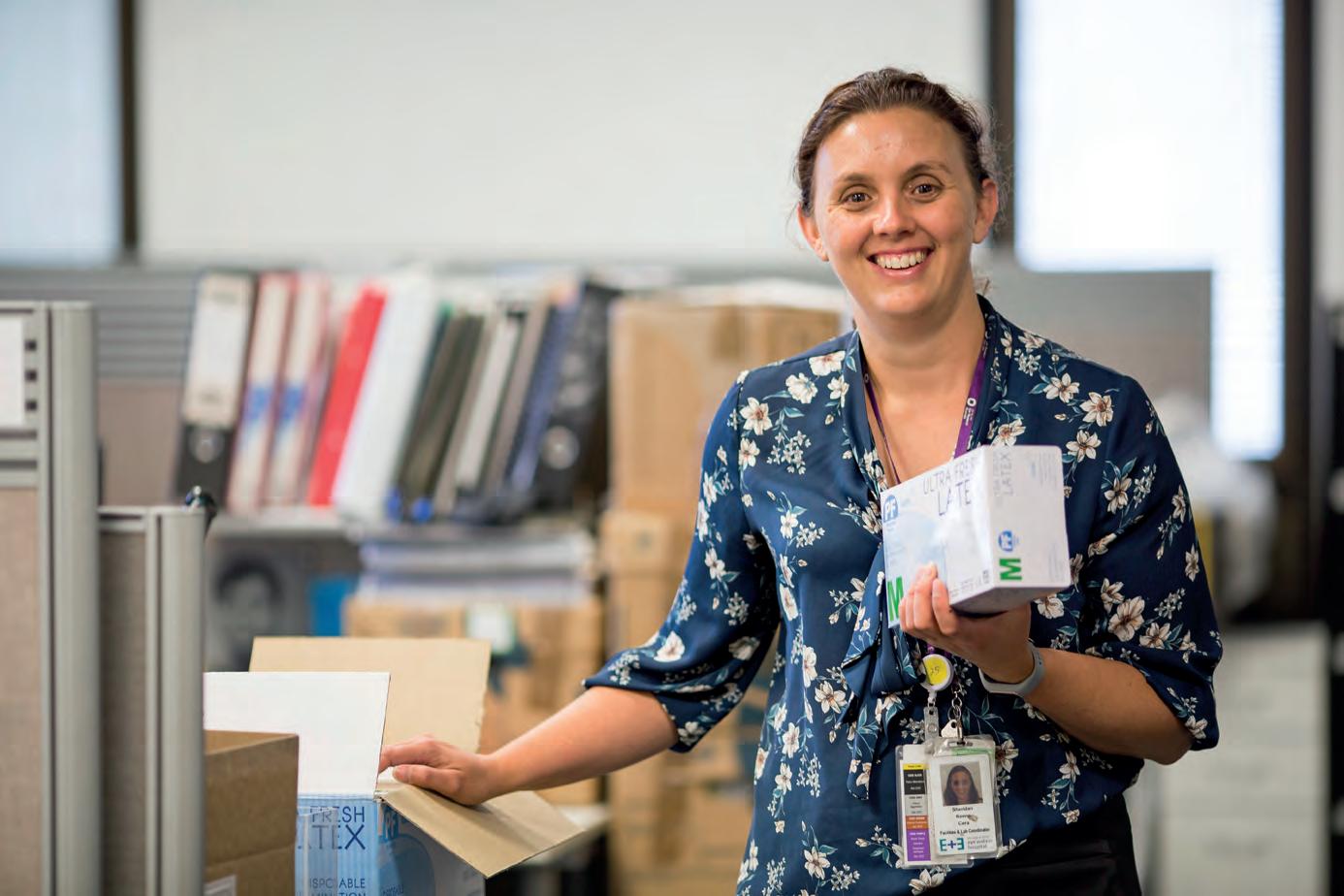

The Australian College of Behavioural Optometry
with more than 20 years in senior management for Growth Faculty, and has executive experience with Family Business Association, the Australian Institute of Company Directors, the Financial Planning Association, and the Governance Institute of Australia. She replaces Steve Leslie, who is retiring from the position after five years. He will continue with ACBO in his new capacity as Optometric Advisor.


Current Vision 2020 Australia Policy Advisor, Jonathan Craig, who is blind and is well-known and respected across the membership, has been promoted as Fabrizio D’Esposito successor as Policy and Advocacy Manager.
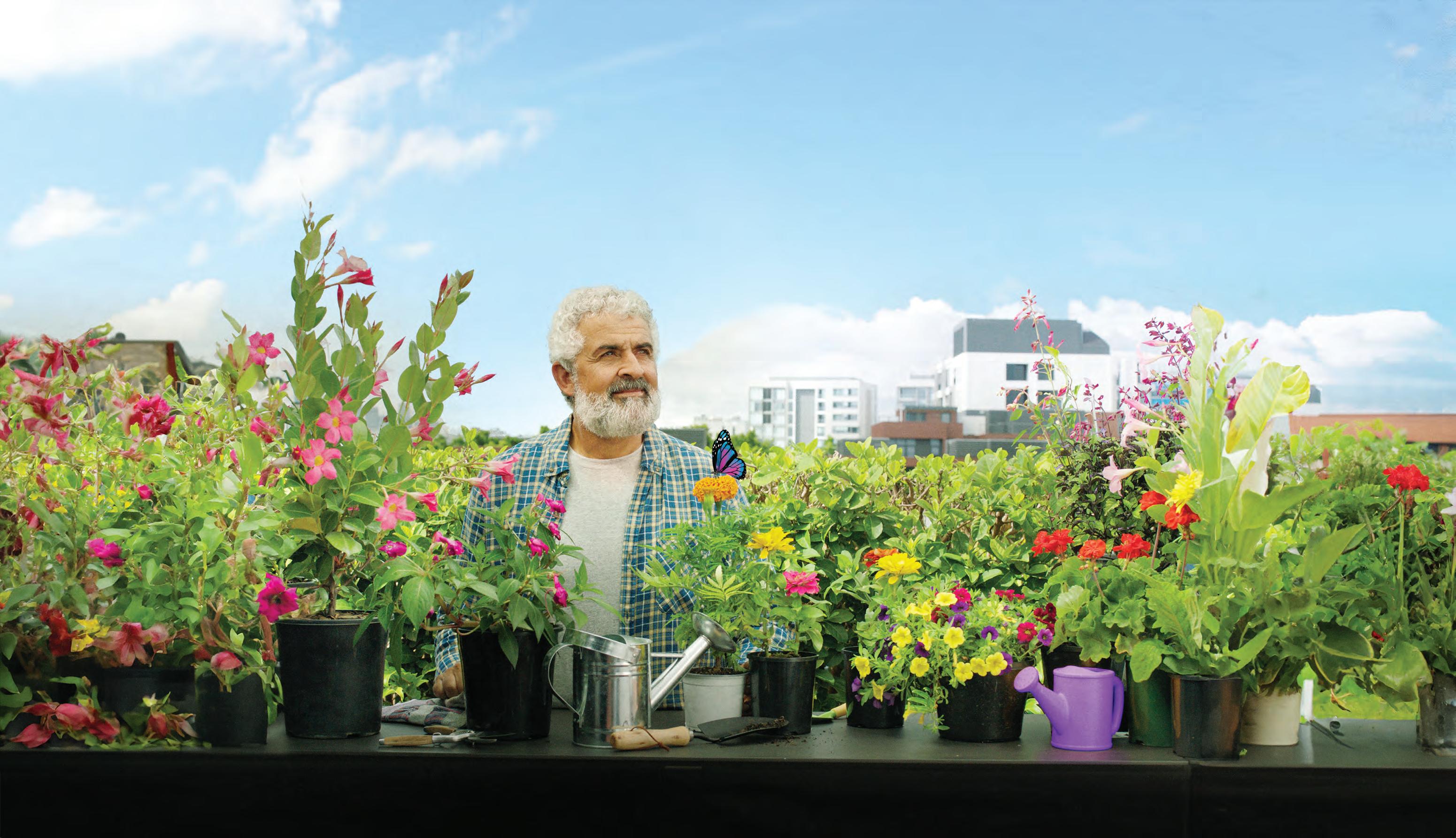

*Based on mean value of binocular defocus curve at near, intermediate, and distance at 6 months (n=127). #Clinical studies were performedon the AcrySof IQ PanOptix®IOL; AcrySof® IQ PanOptix®and Clareon® PanOptix® are optically equivalent.† Snellen VA was converted from logMAR VA. A Snellen notation of 20/20^-2 or better indicates a logMAR VA of 0.04 or better, which means 3 or more of the 5 Early Treatment Diabetic Retinopathy Study chart letters in the line were identified correctly. 1. Global IOL unitsSummary - 2022, p1. 2. Market Scope 2023 IOL Market Report, p14. 3. Zhu D, Ren S, Mills K, Hull J, Dhariwal M. Rate of complete spectacle independence with a trifocal intraocular lens: A systematic literature review and meta-analysis. Ophthalmology and Therapy. 2023;12(2):1157-1171. 4. Modi S, Lehmann R, Maxwell A, et al. Visual and patient-reported outcomes of a di ractive trifocal intraocular lens compared with those of a monofocal intraocular lens. Ophthalmology. 2021 5. Kohnen T, Lapid-Gortzak R, Ramamurthy D, et al. Clinical outcomes after bilateral implantation of a di ractive trifocal intraocular lens: A worldwide pooled analysis of prospective clinical investigations. Clinical Ophthalmology. 2023;Volume 17:155-163. With the

91.6% complete spectacle independence3 • 99% of patients would choose again4# • 20/20 vision at all distances 5*†#
